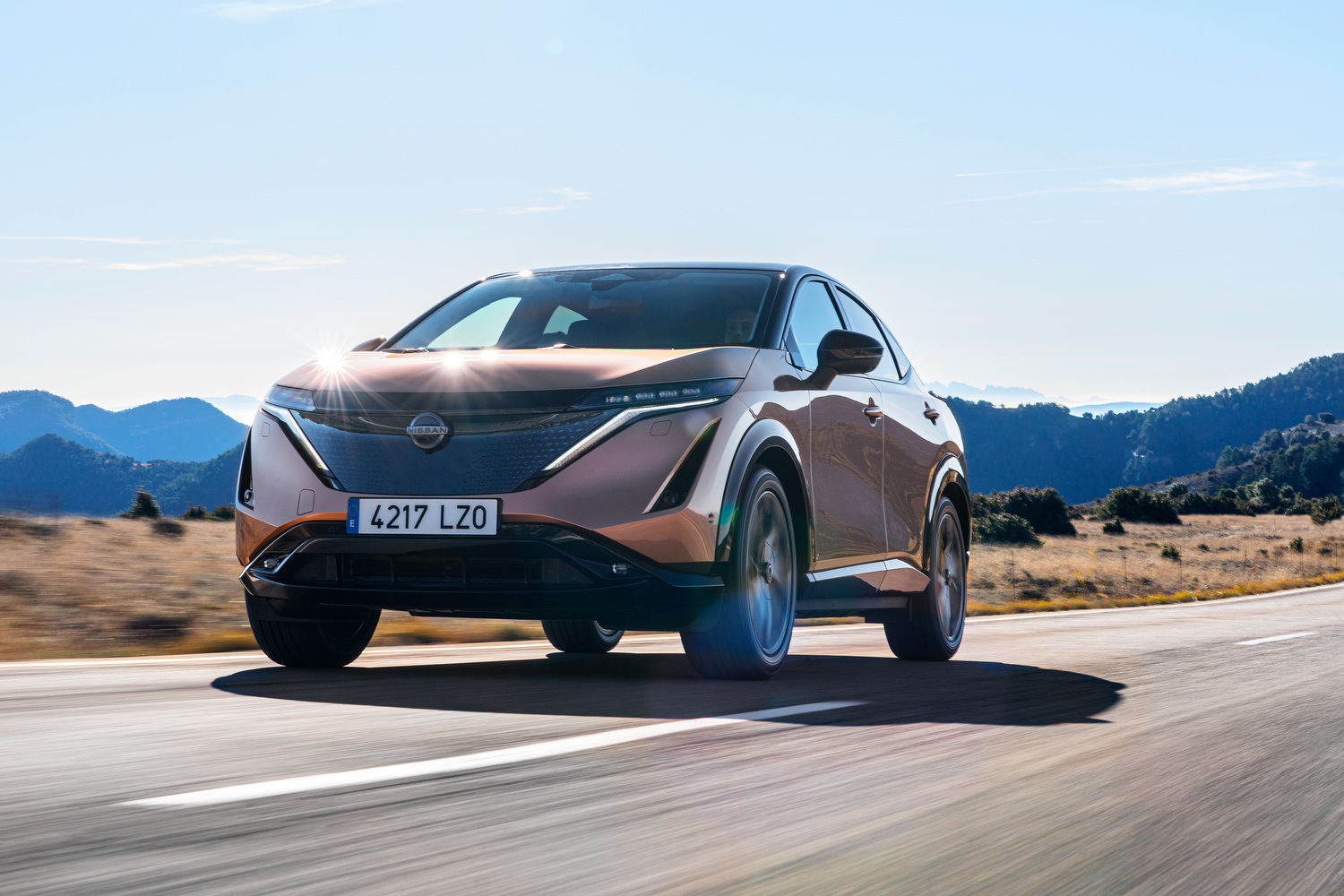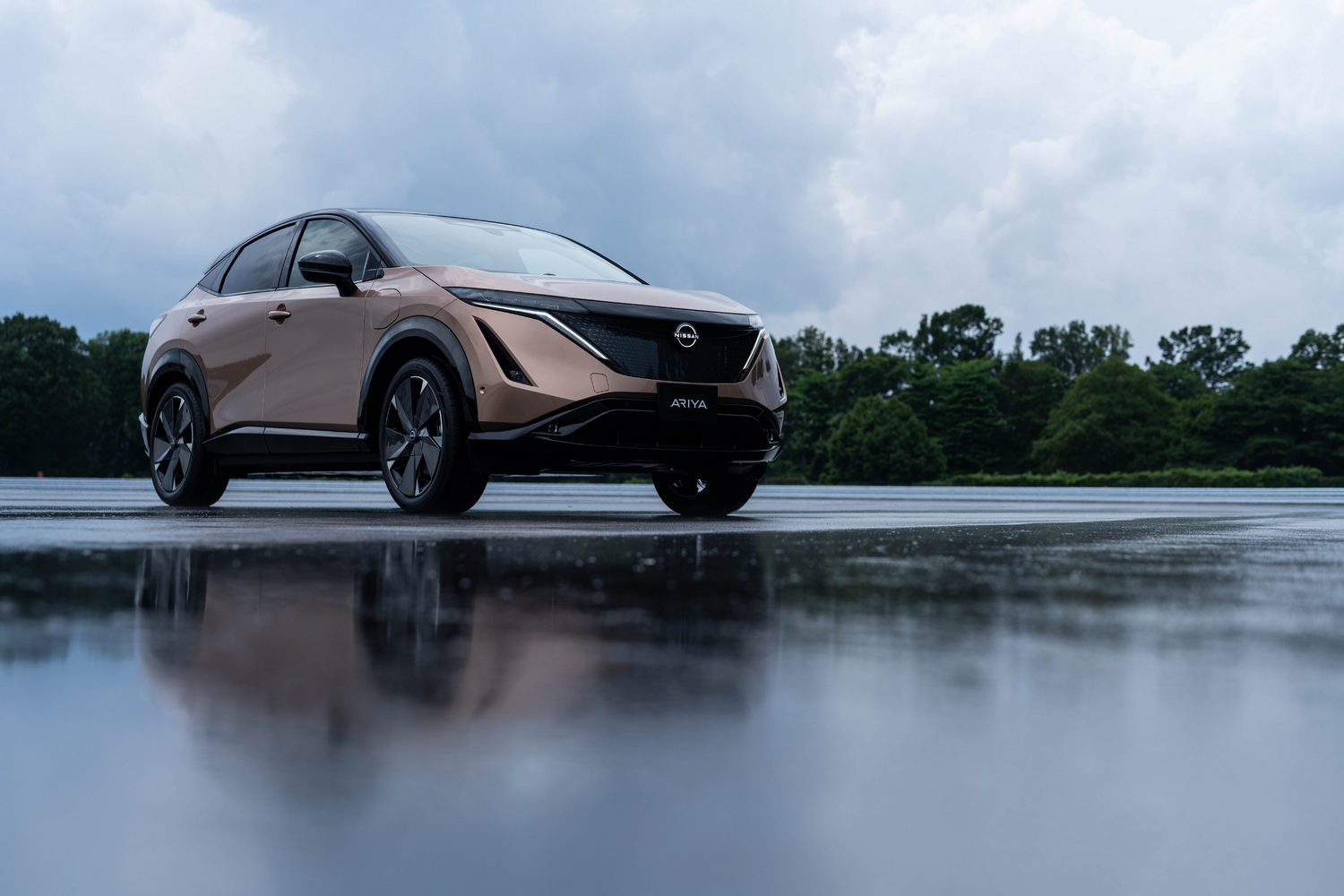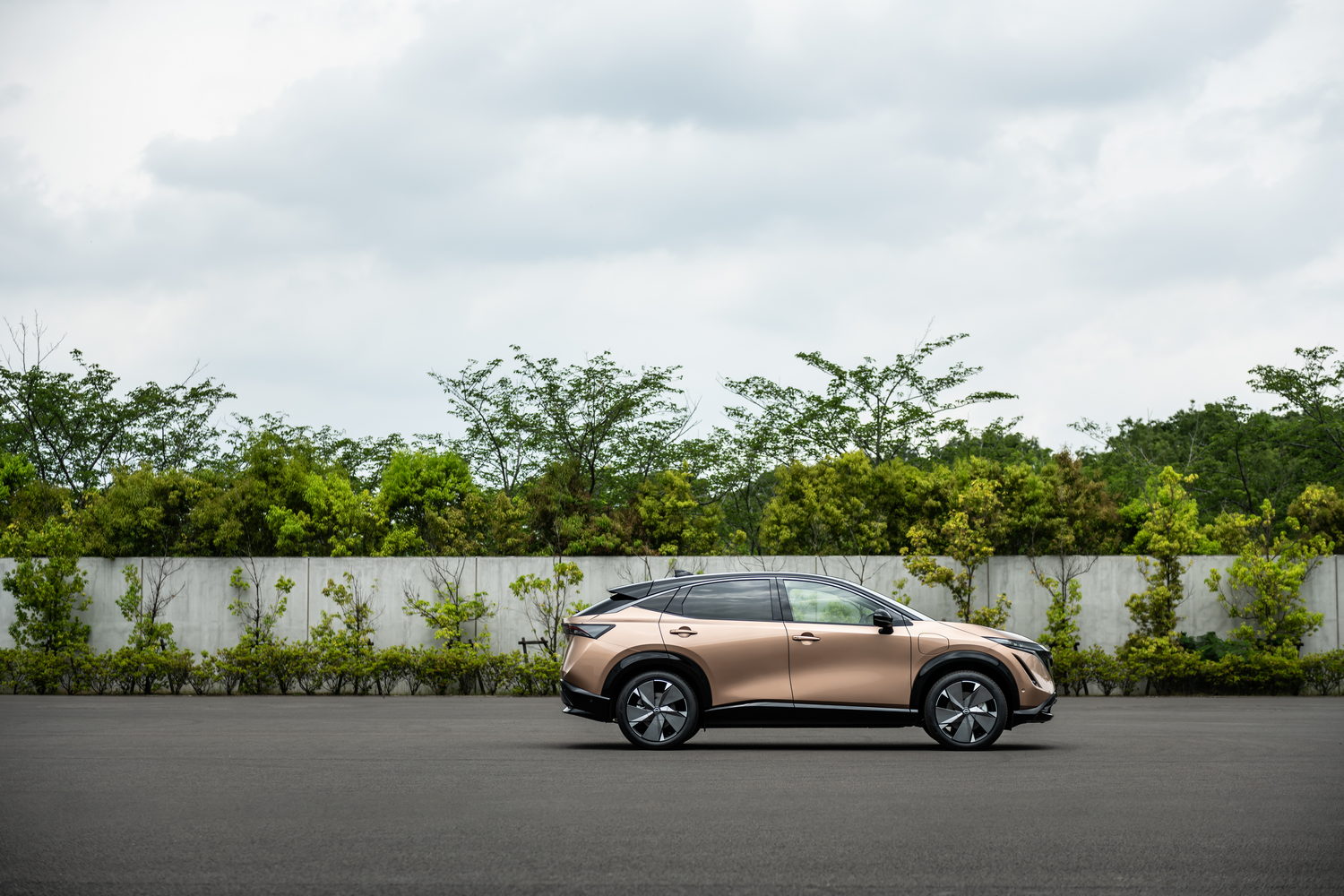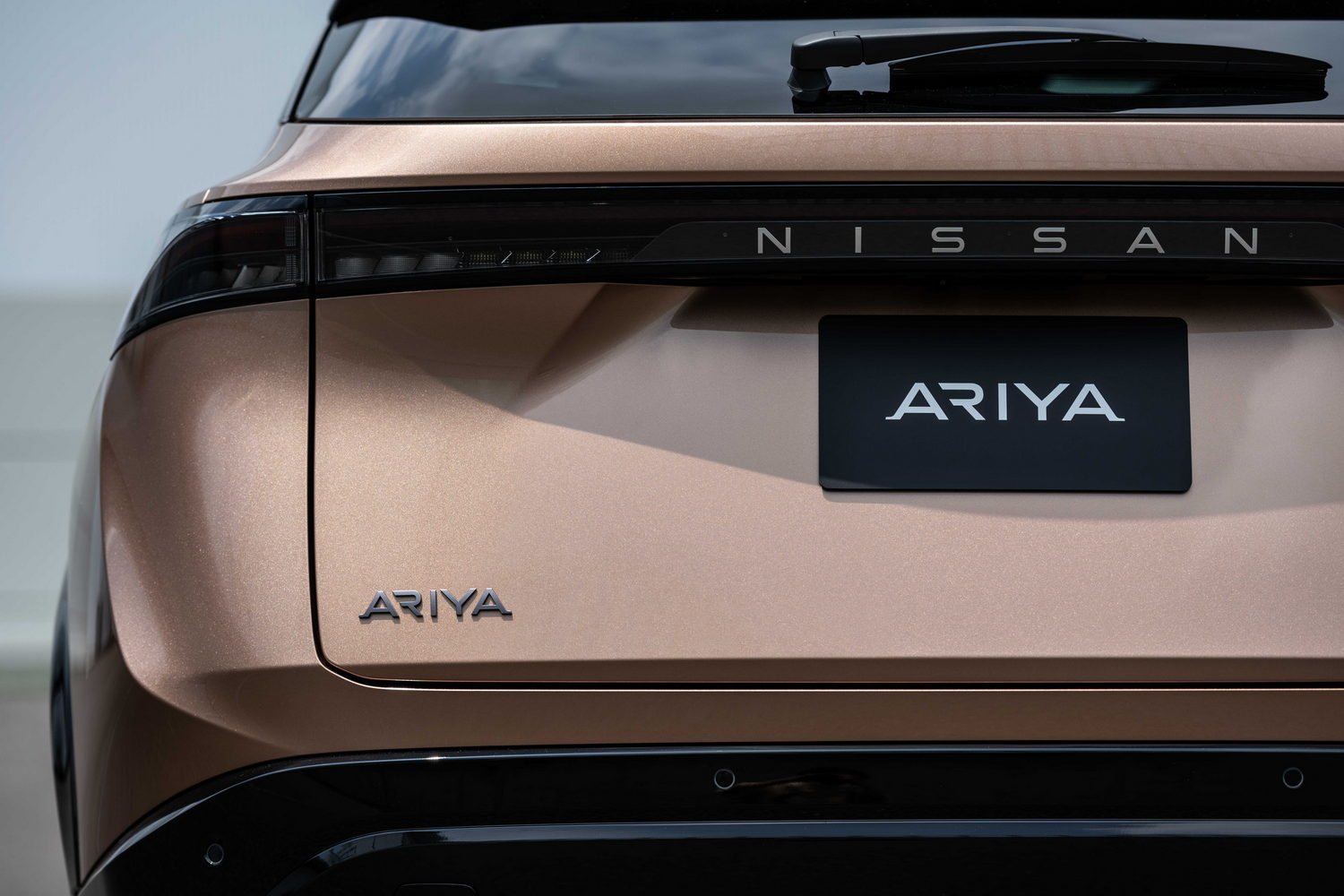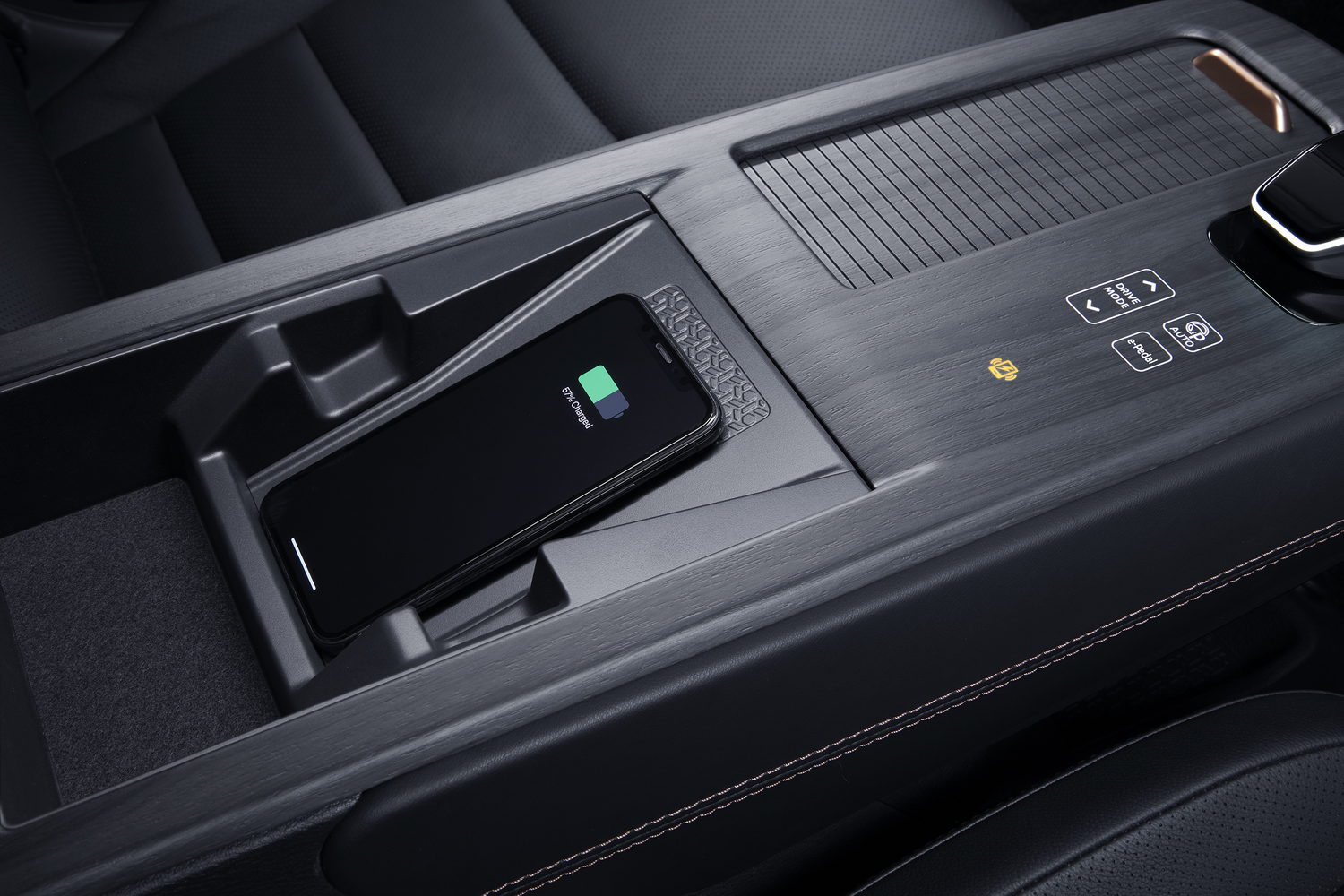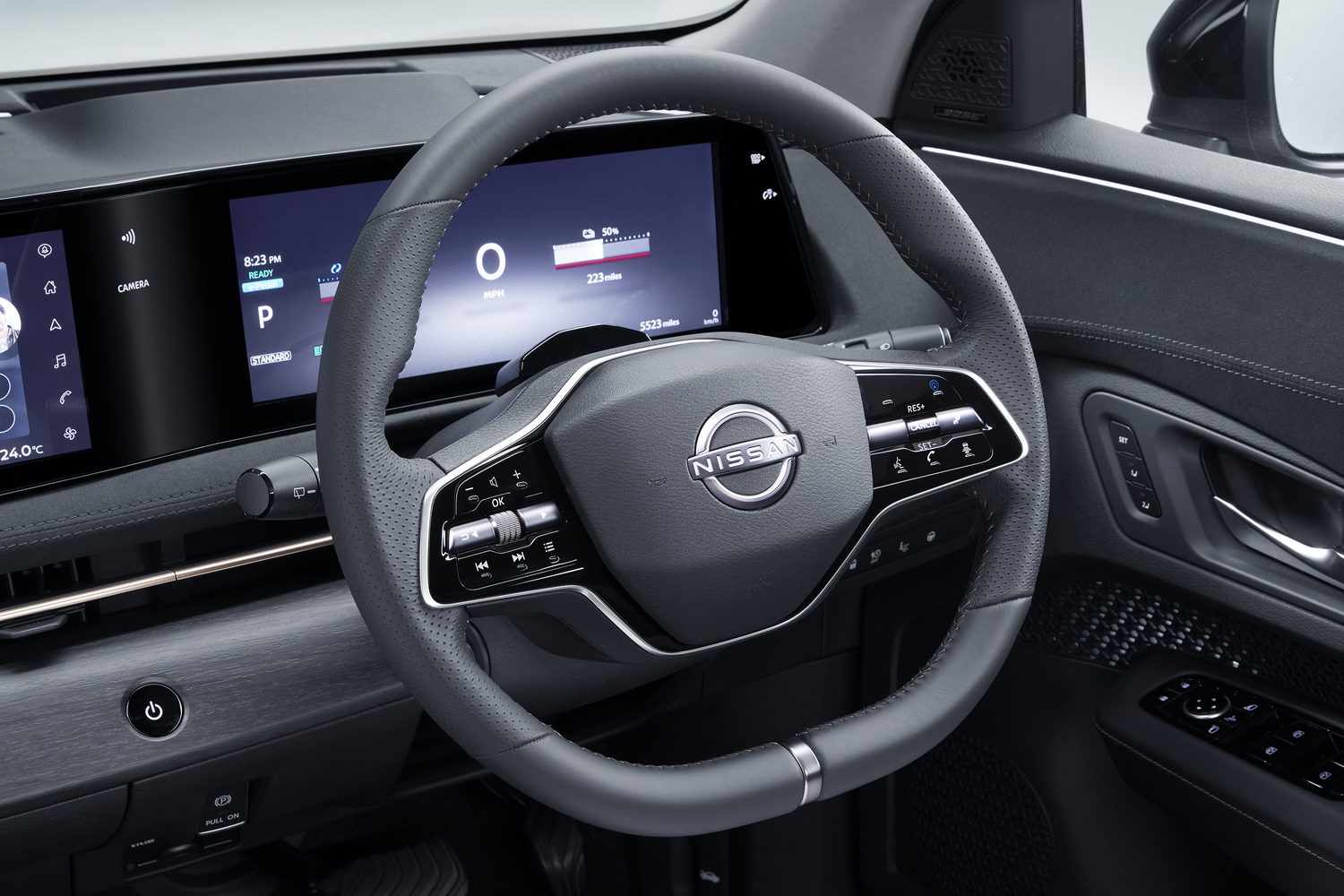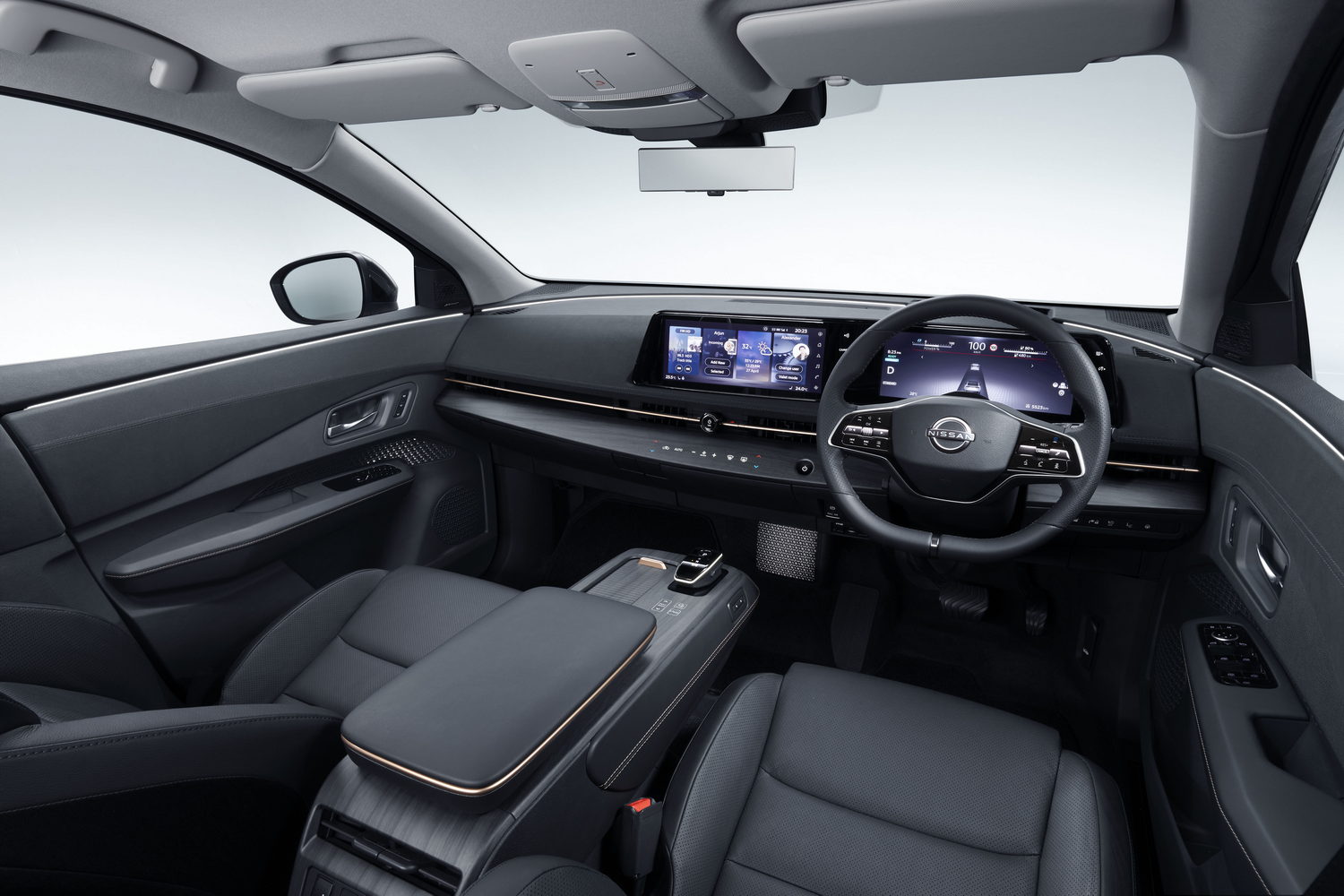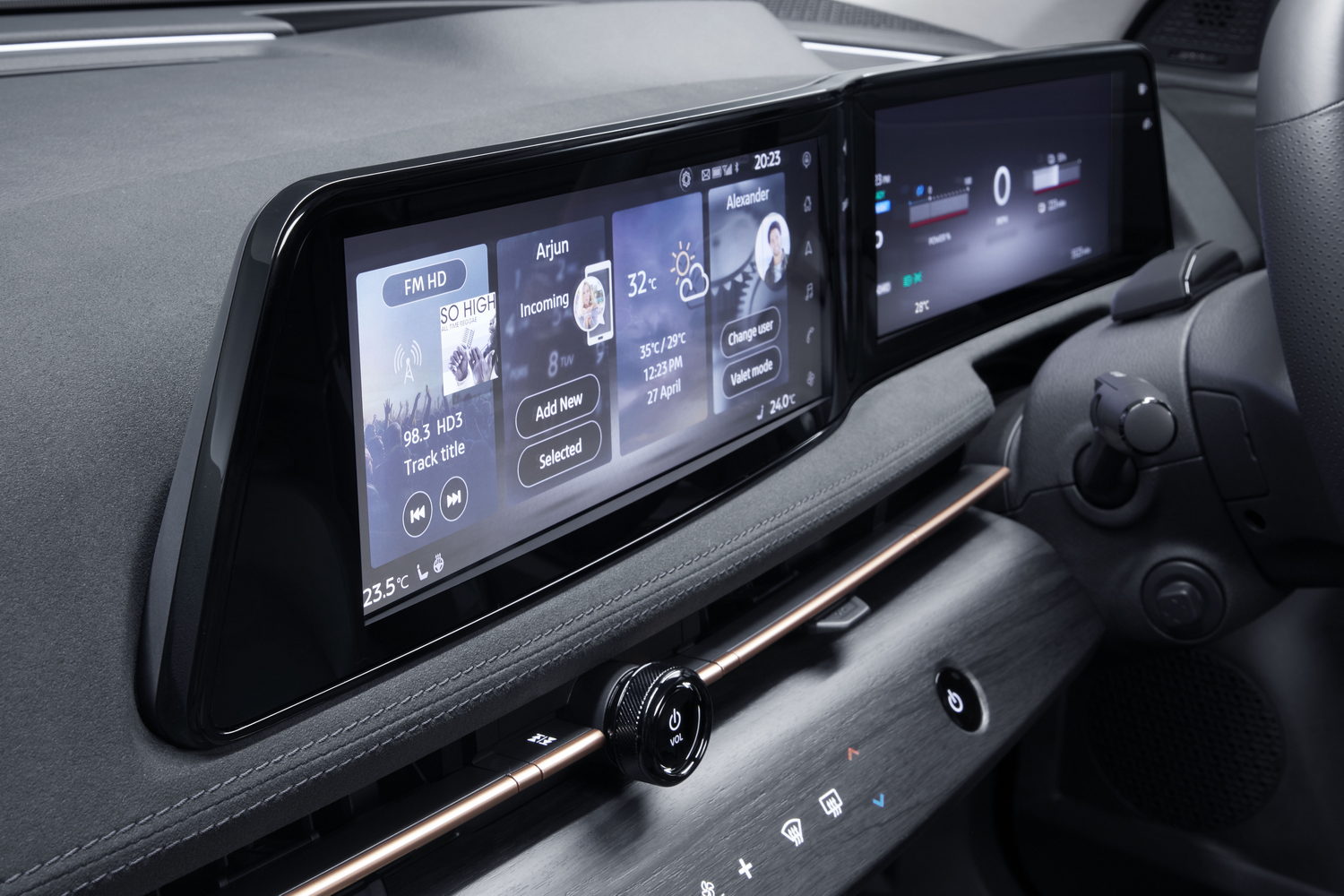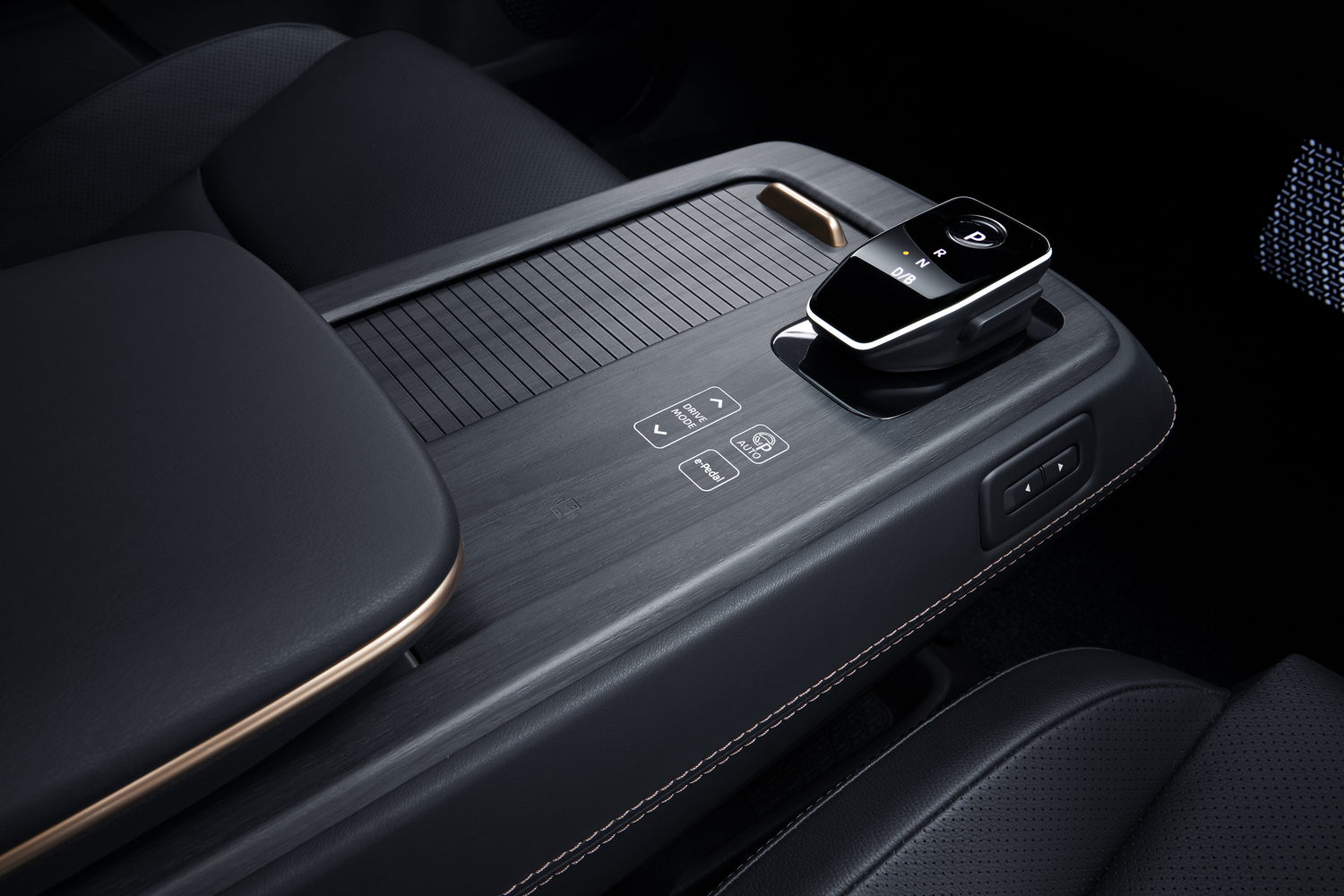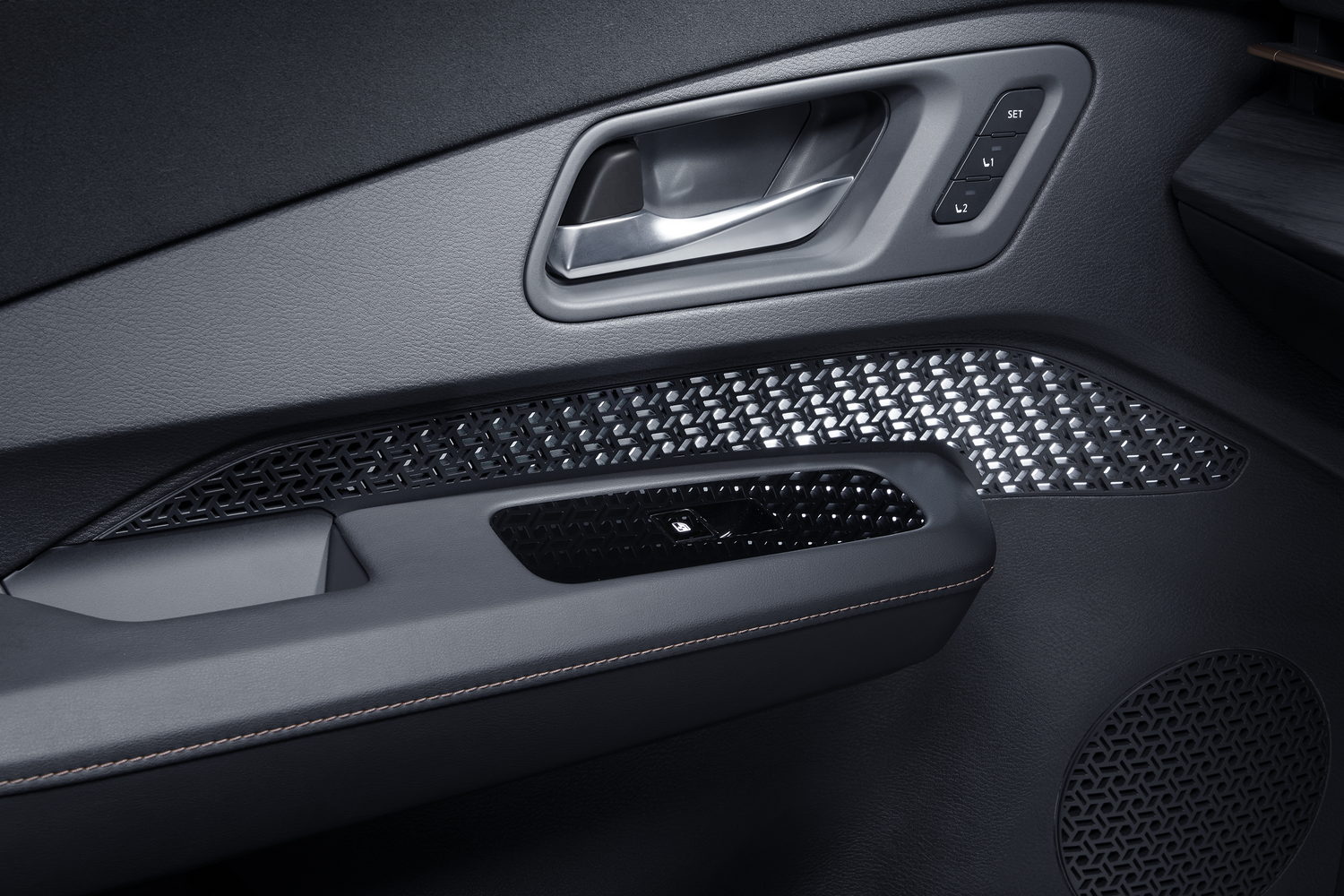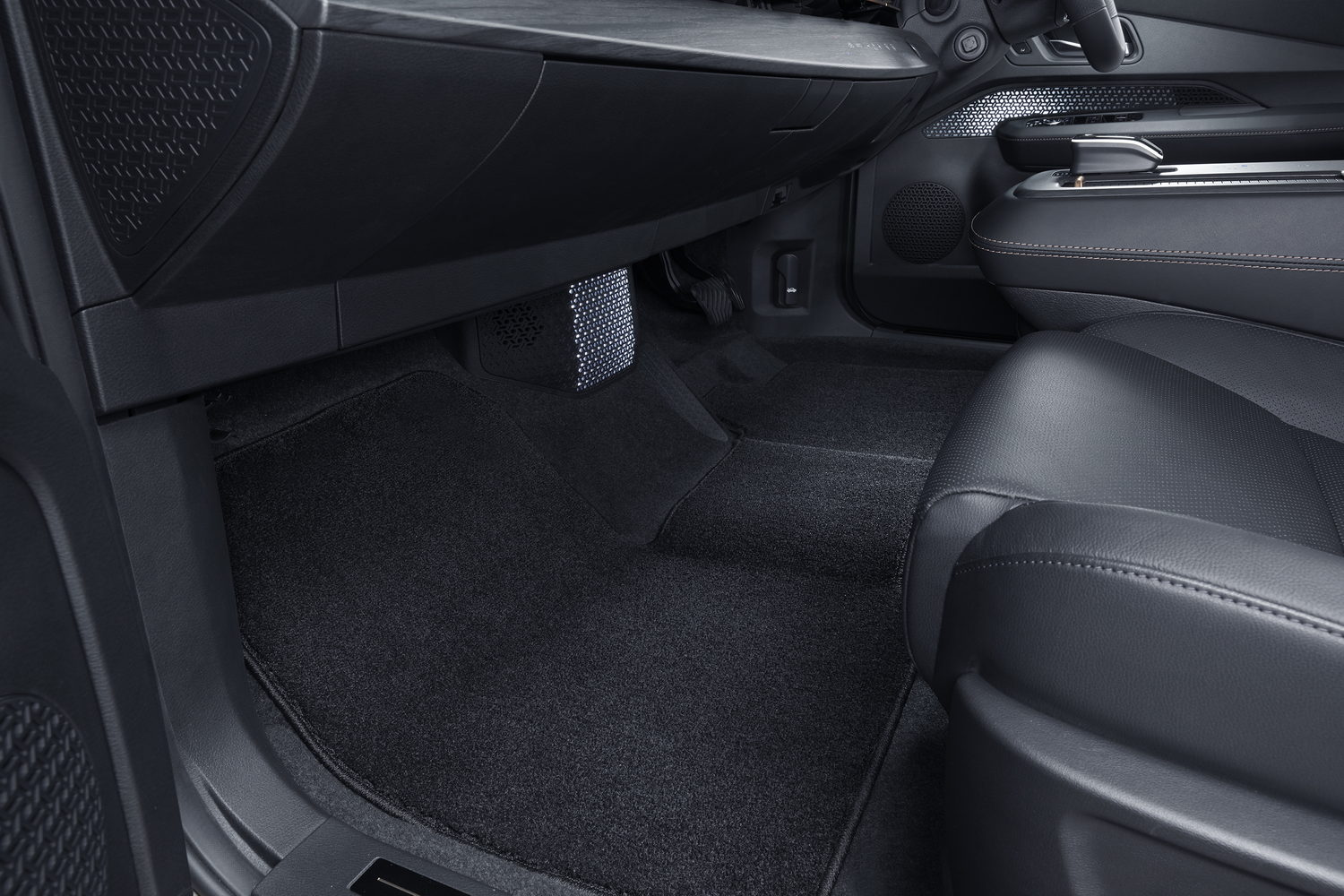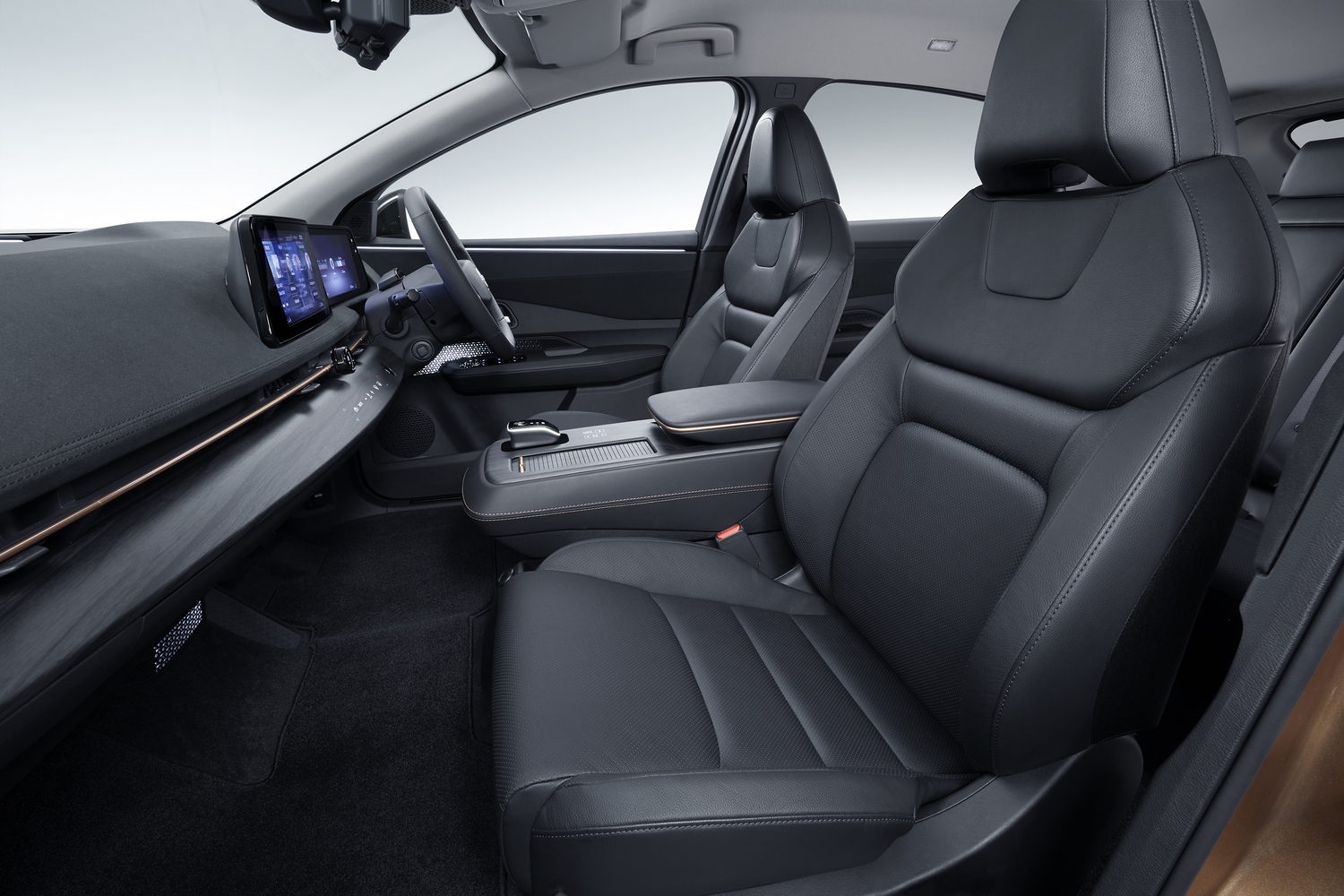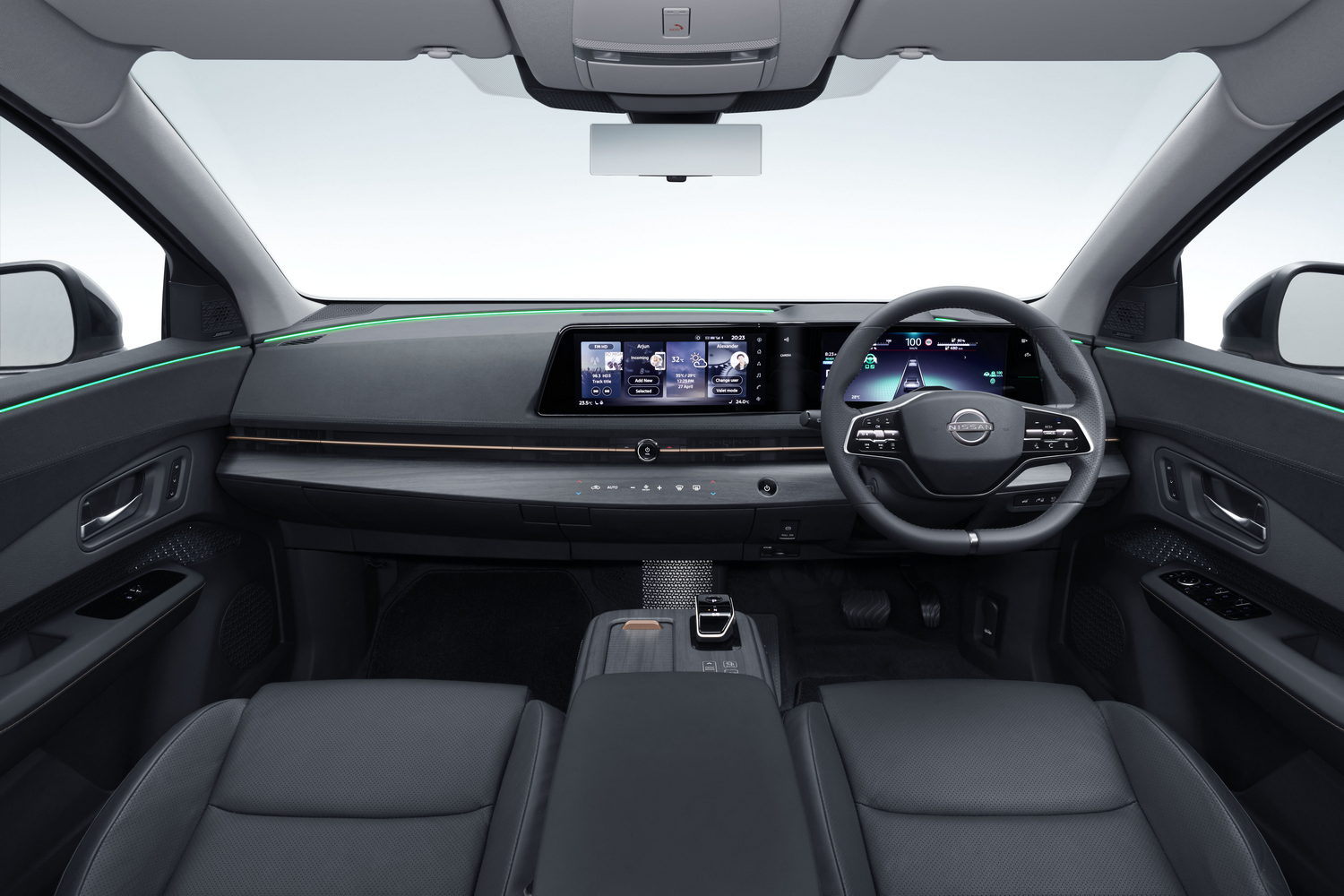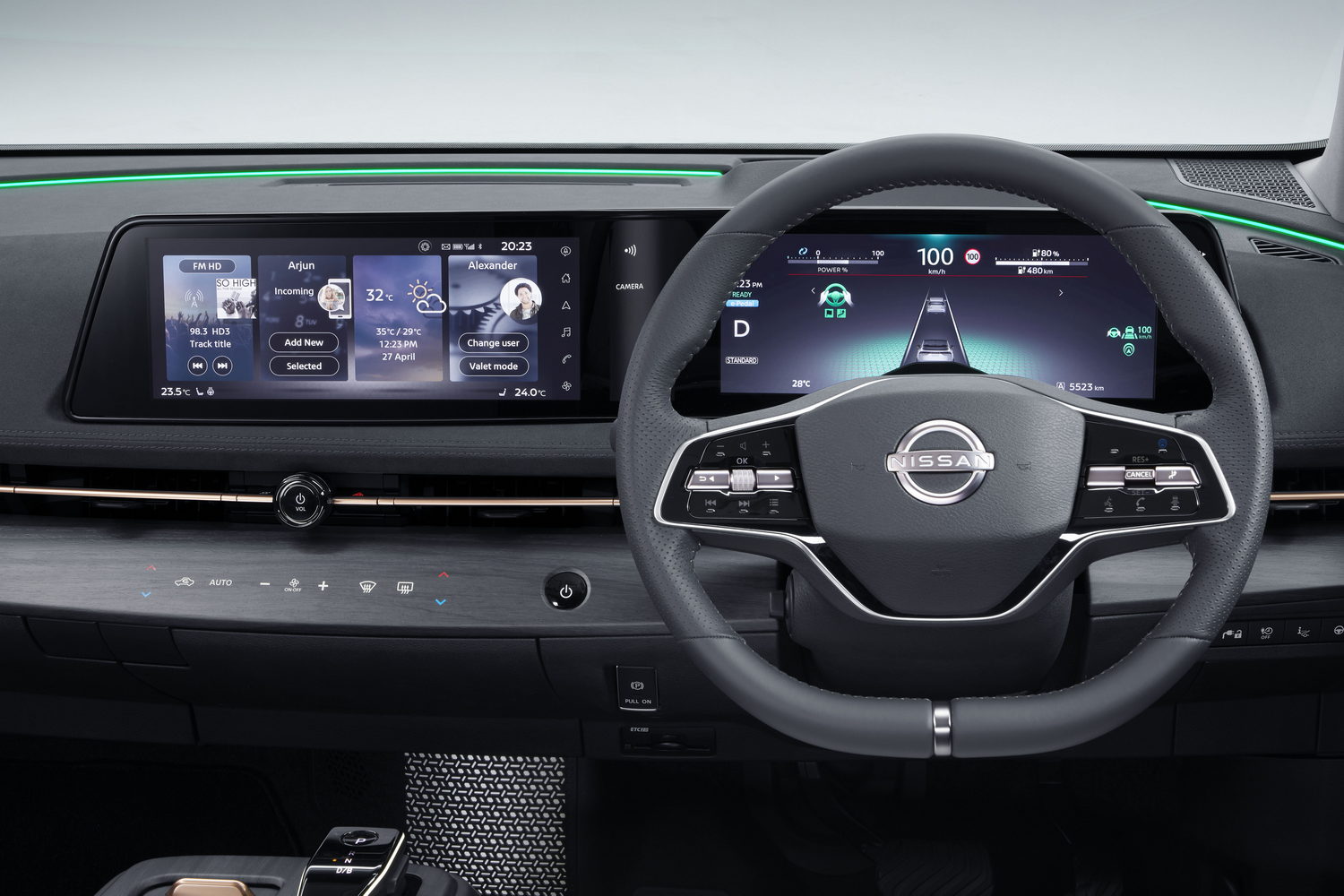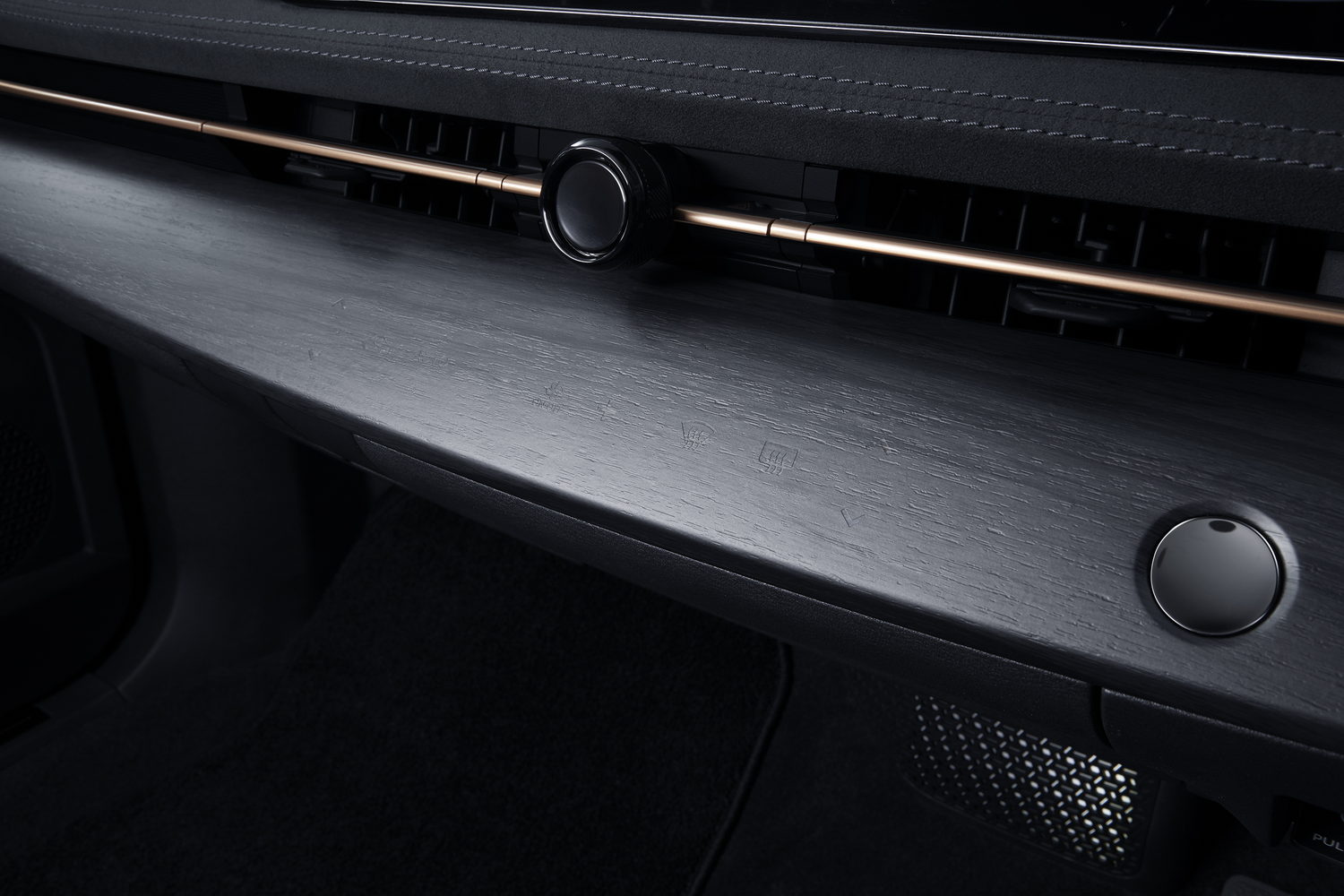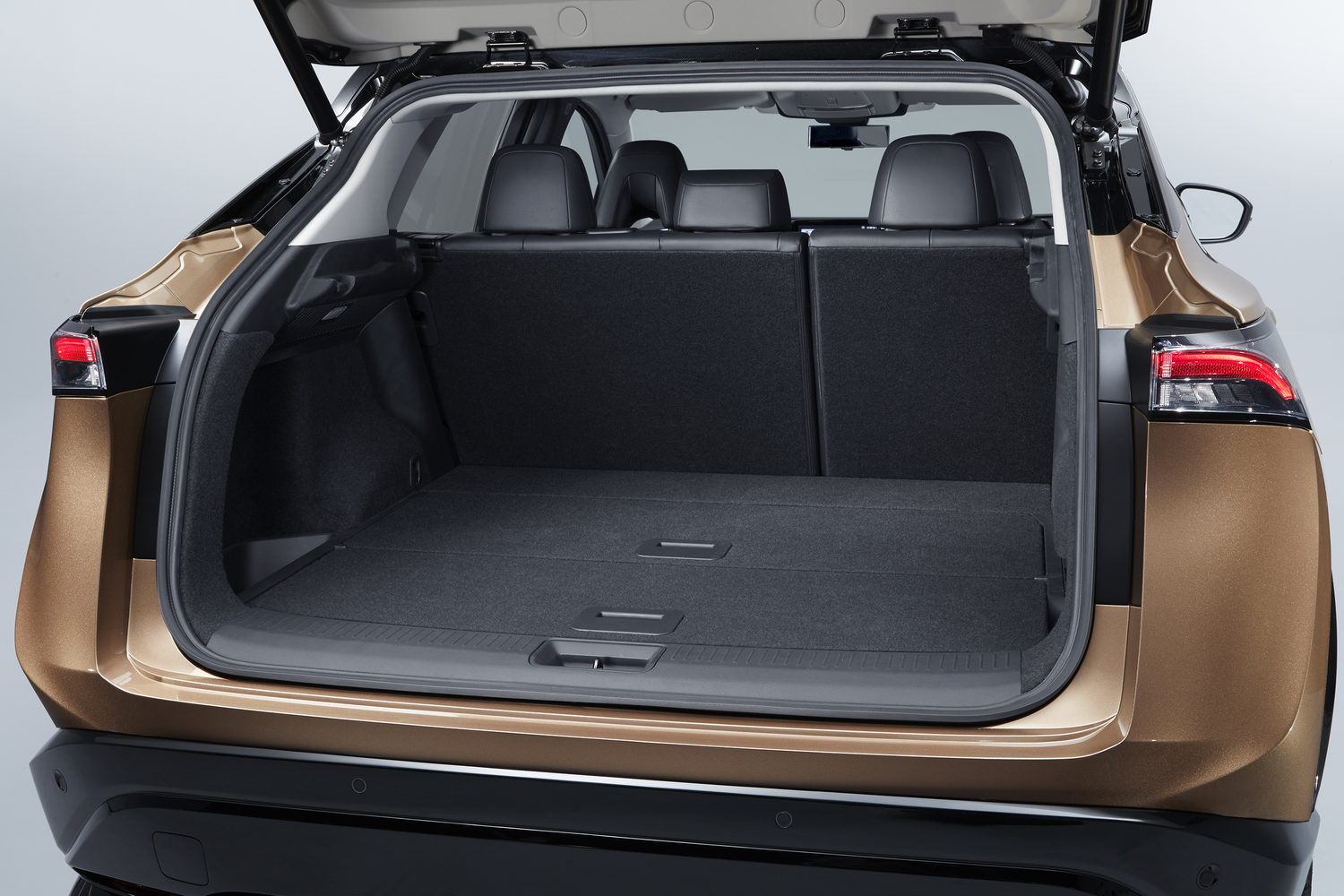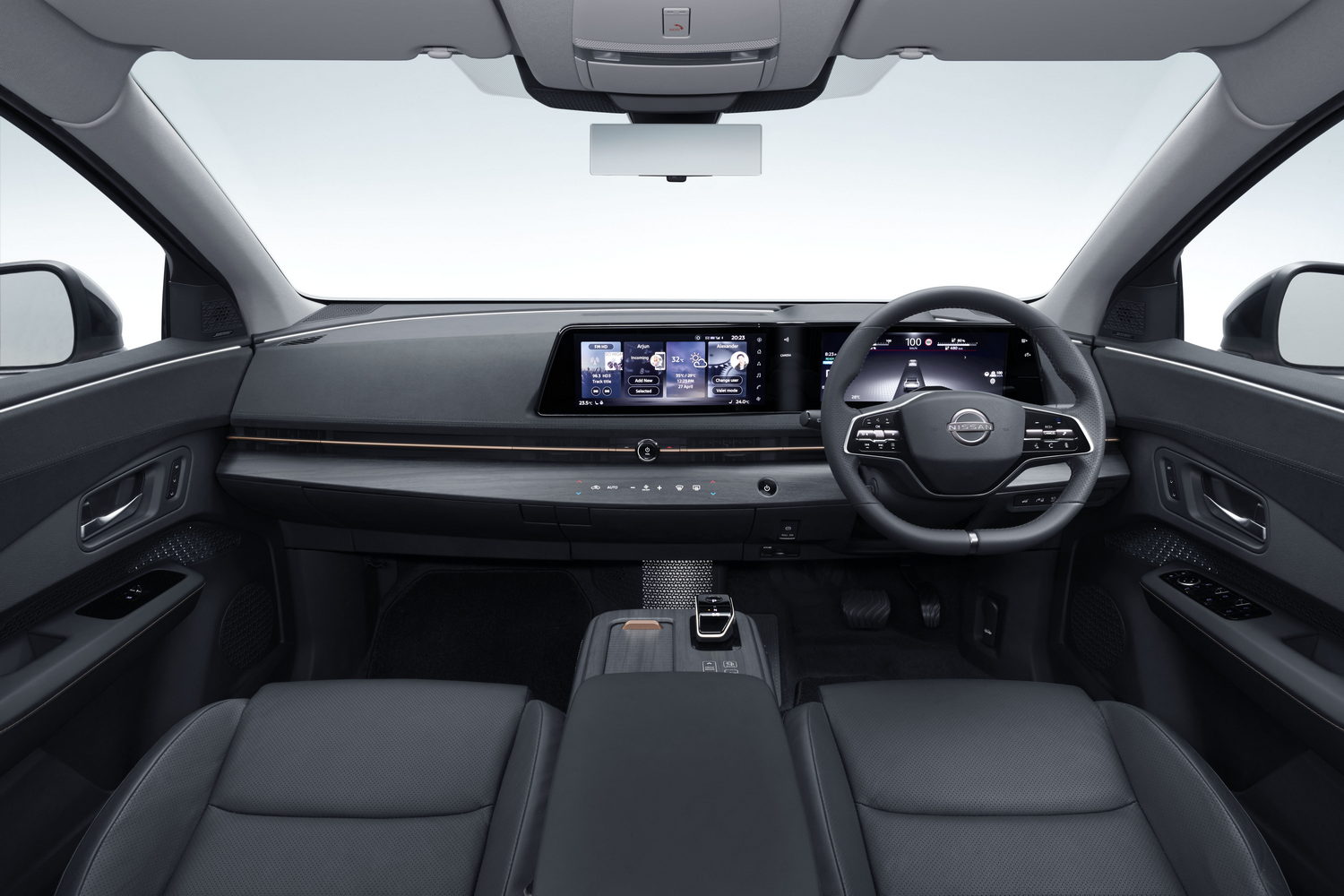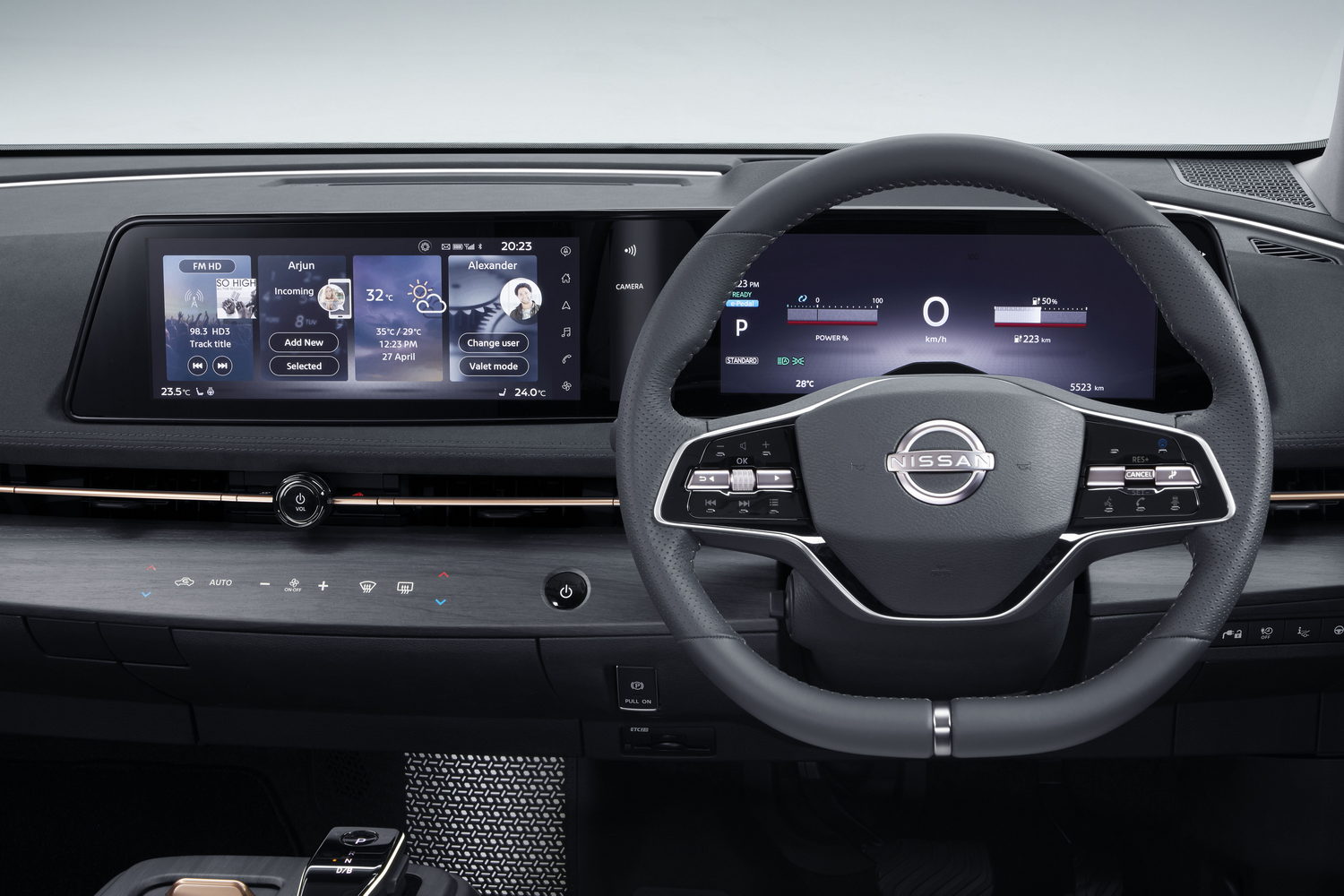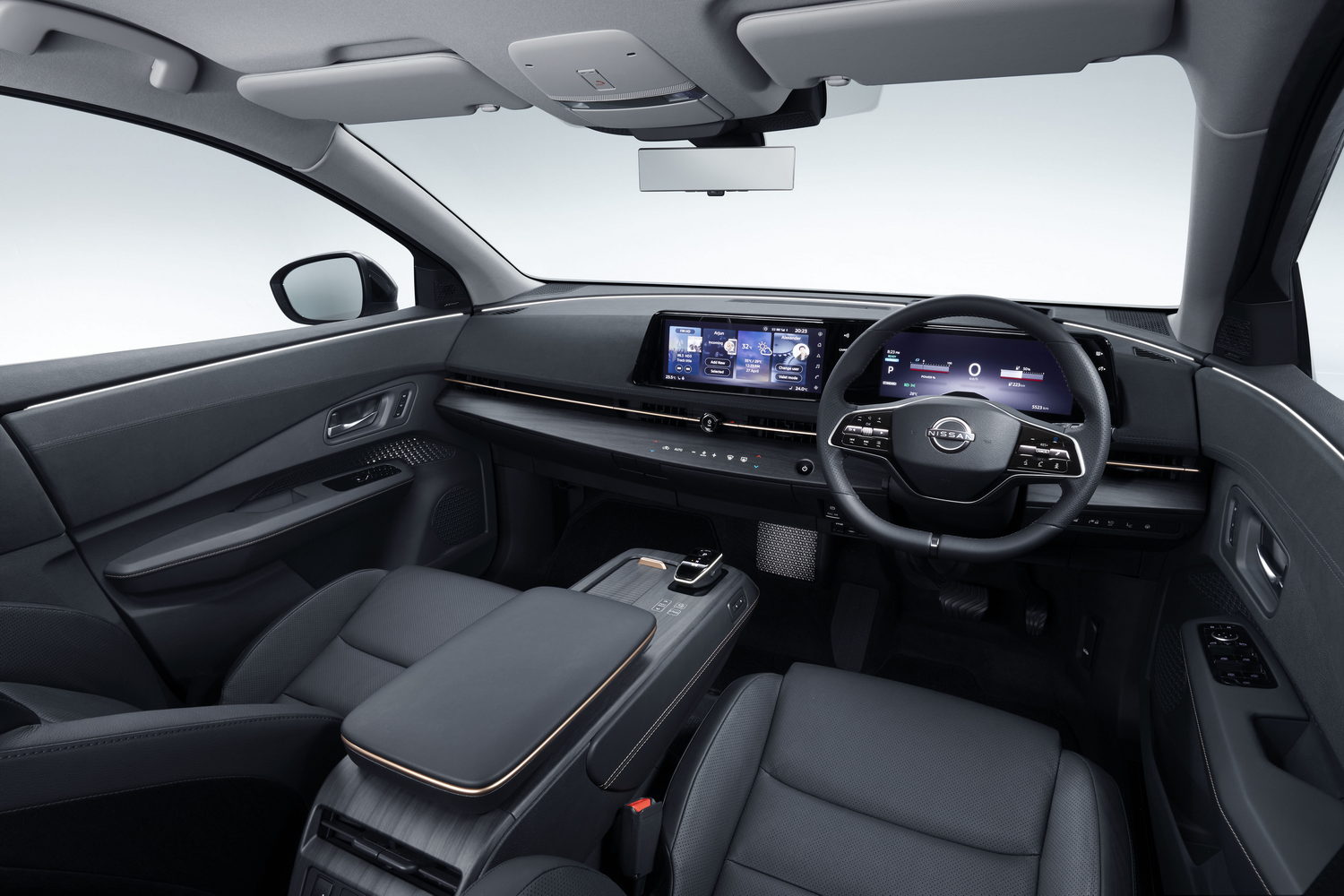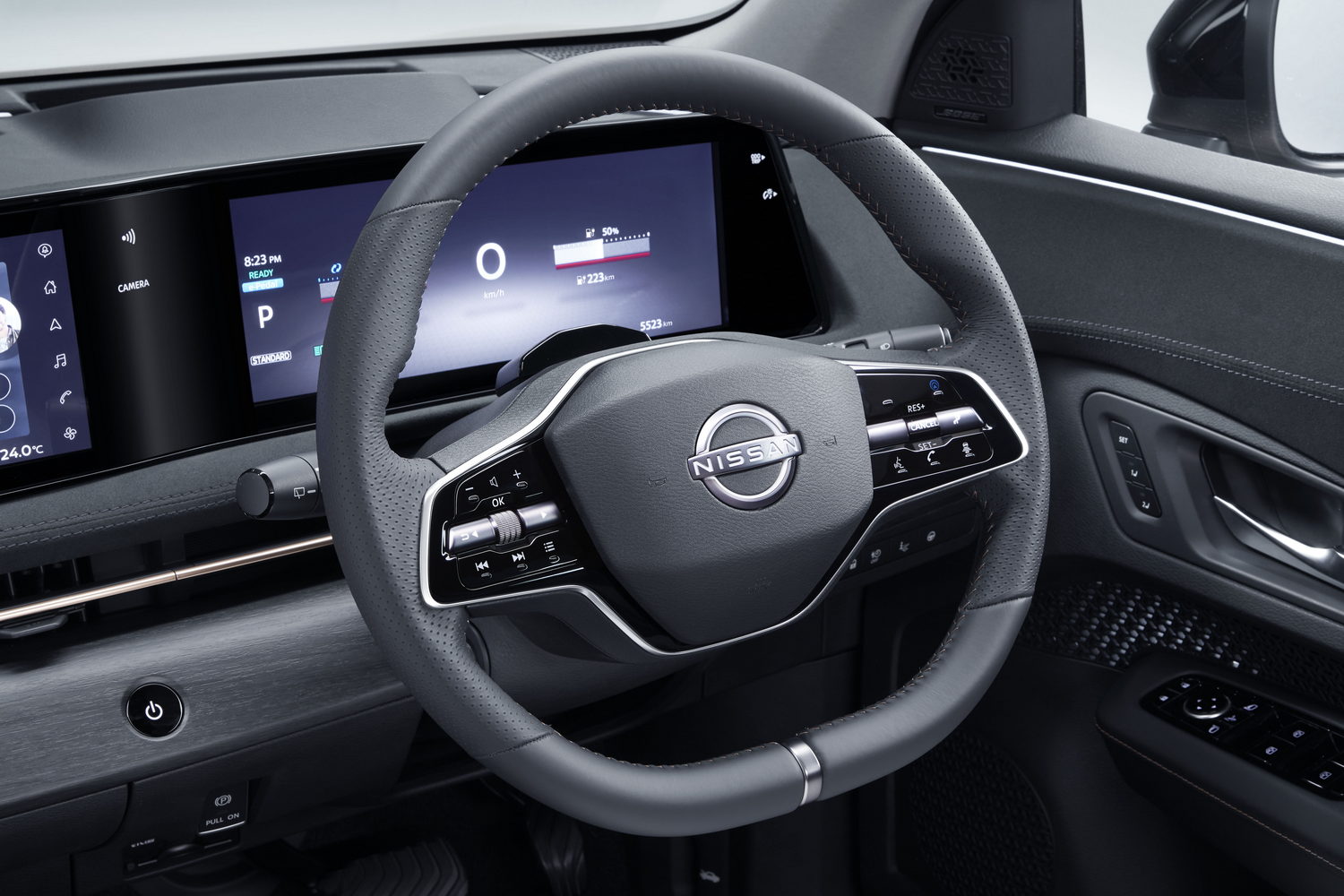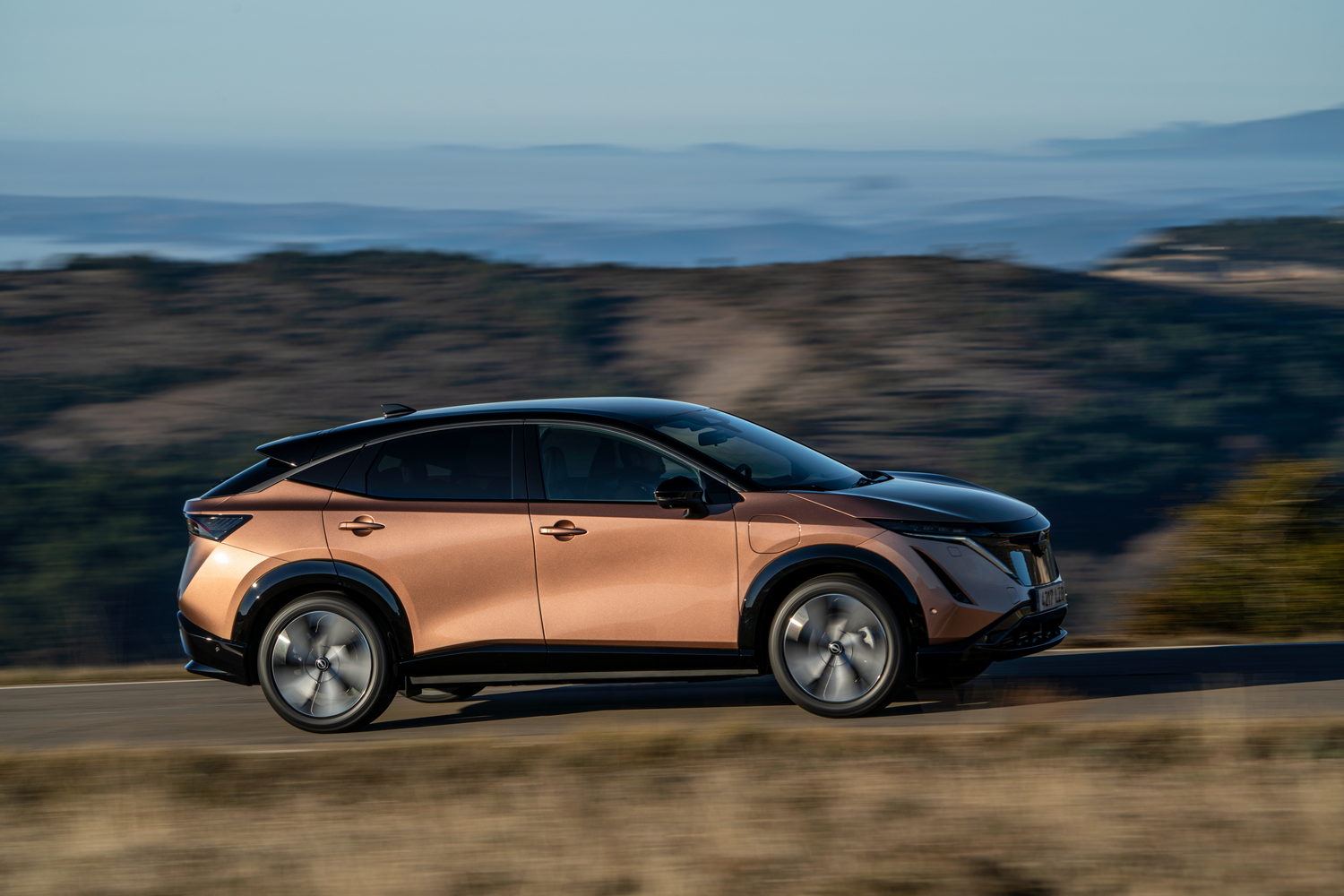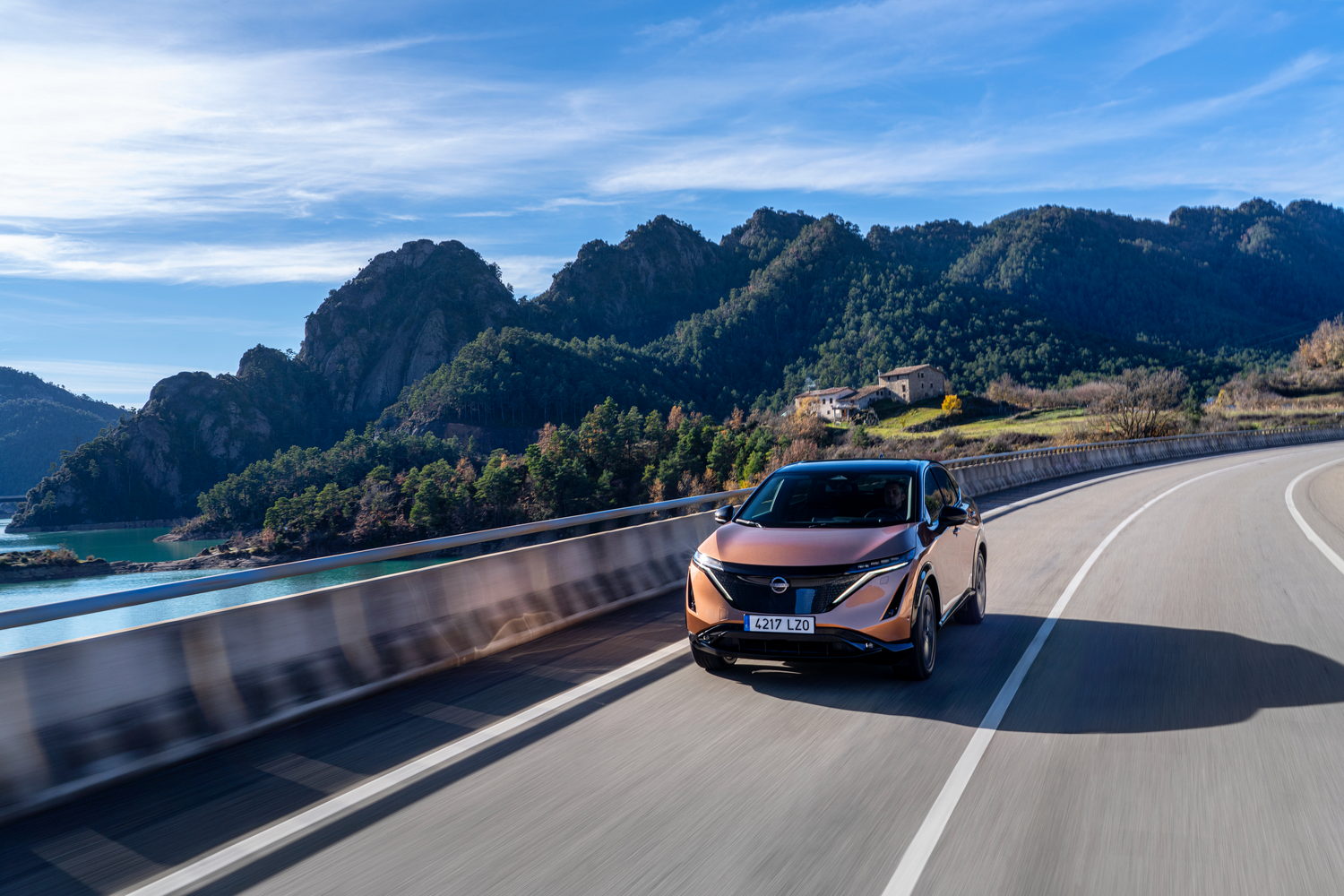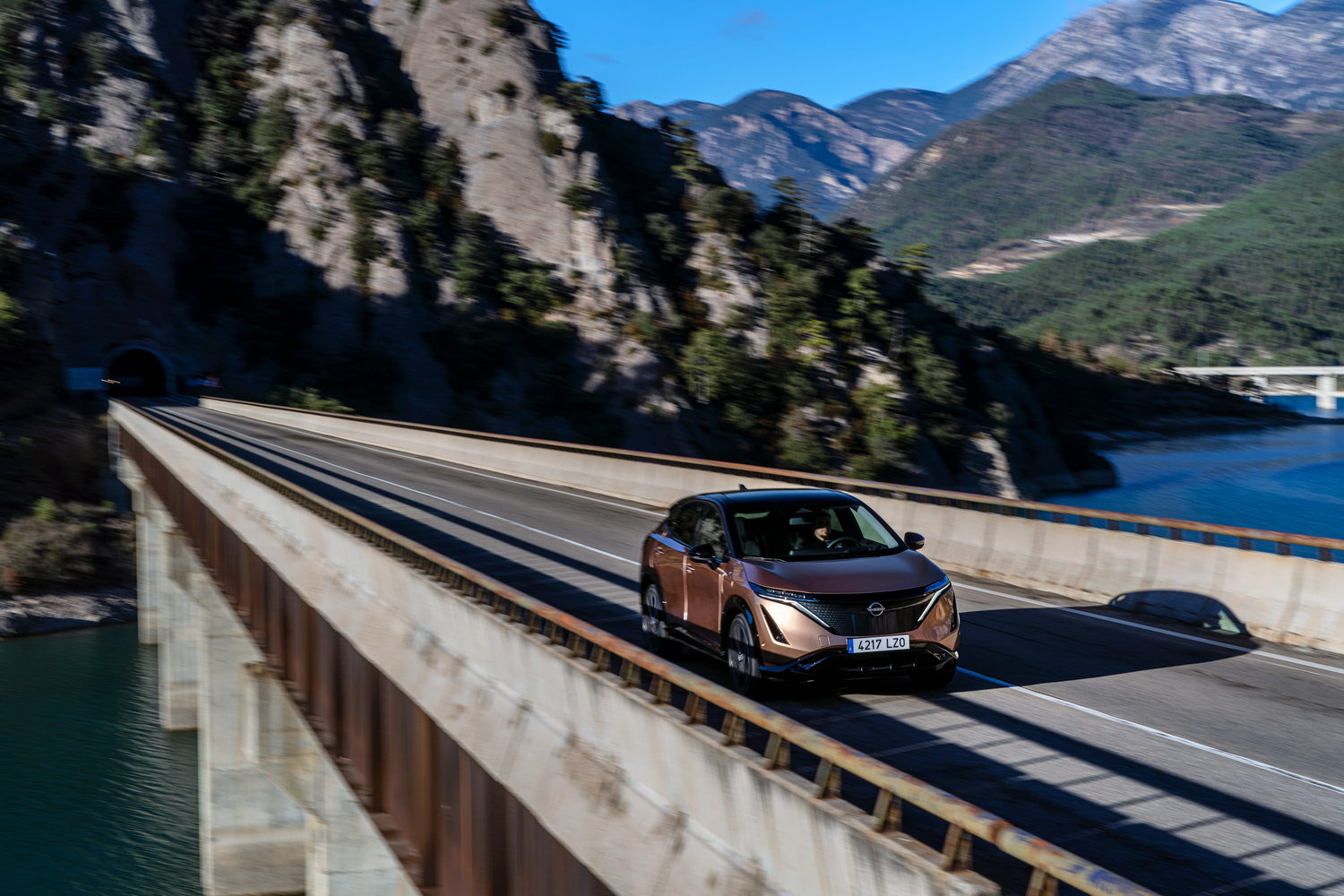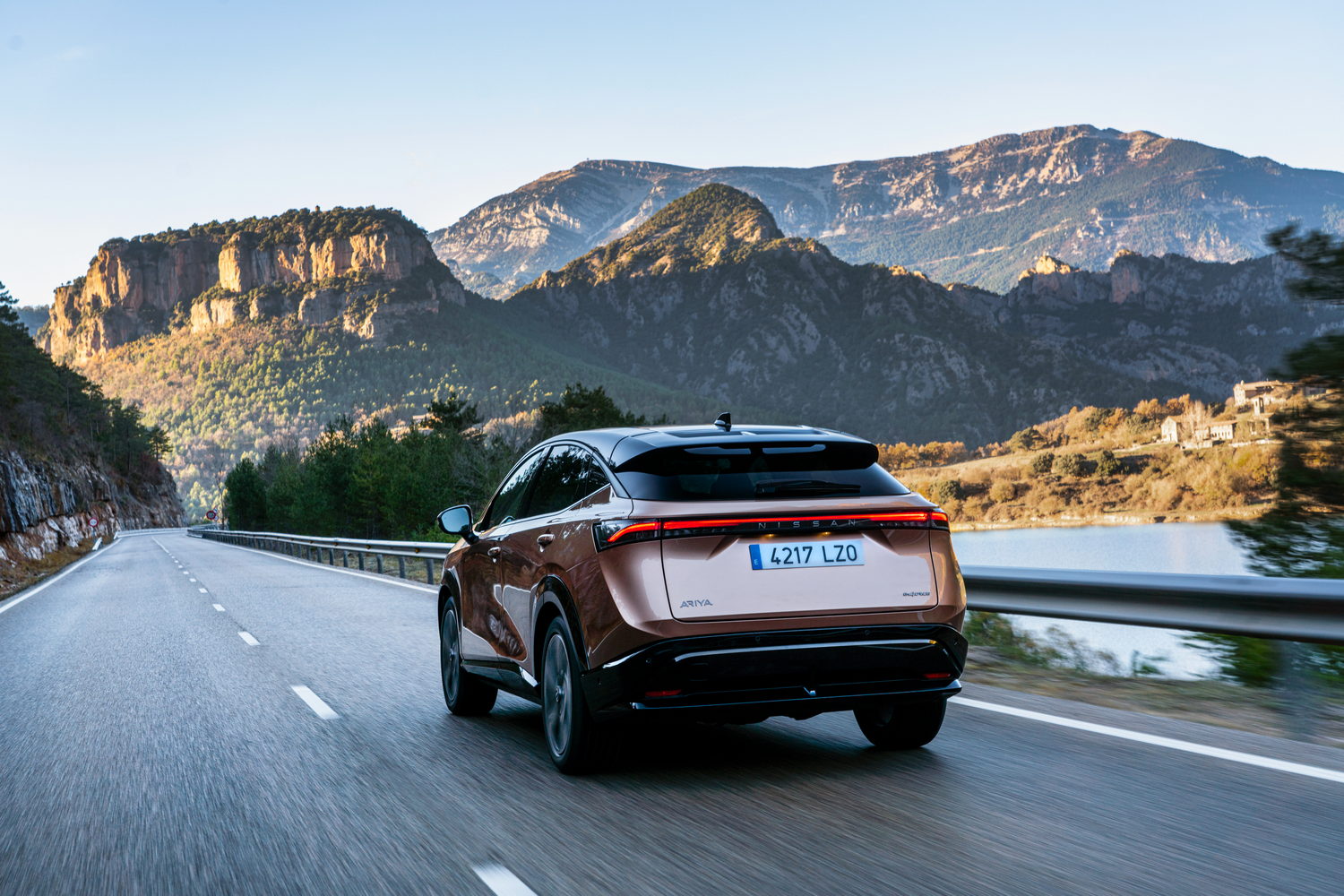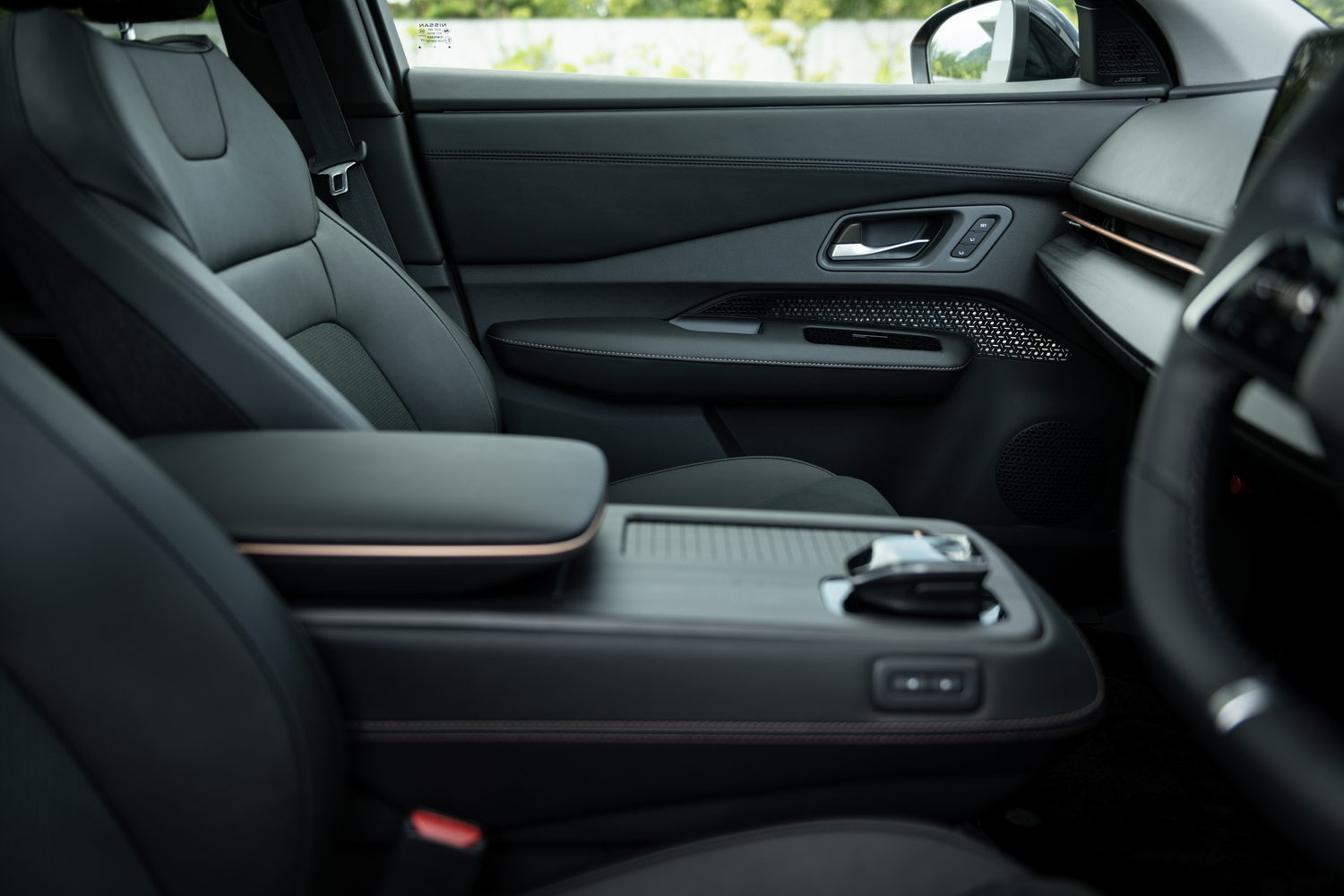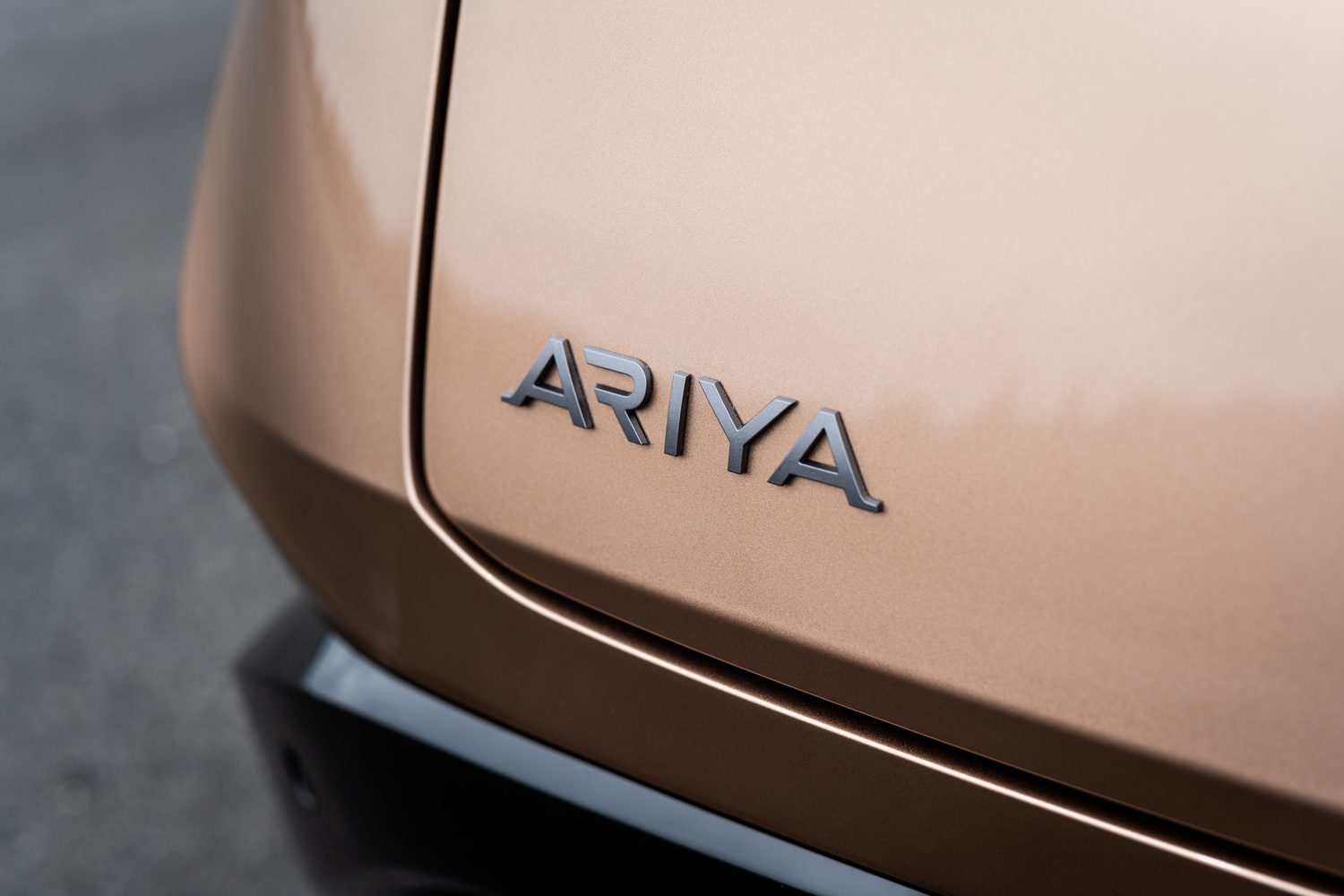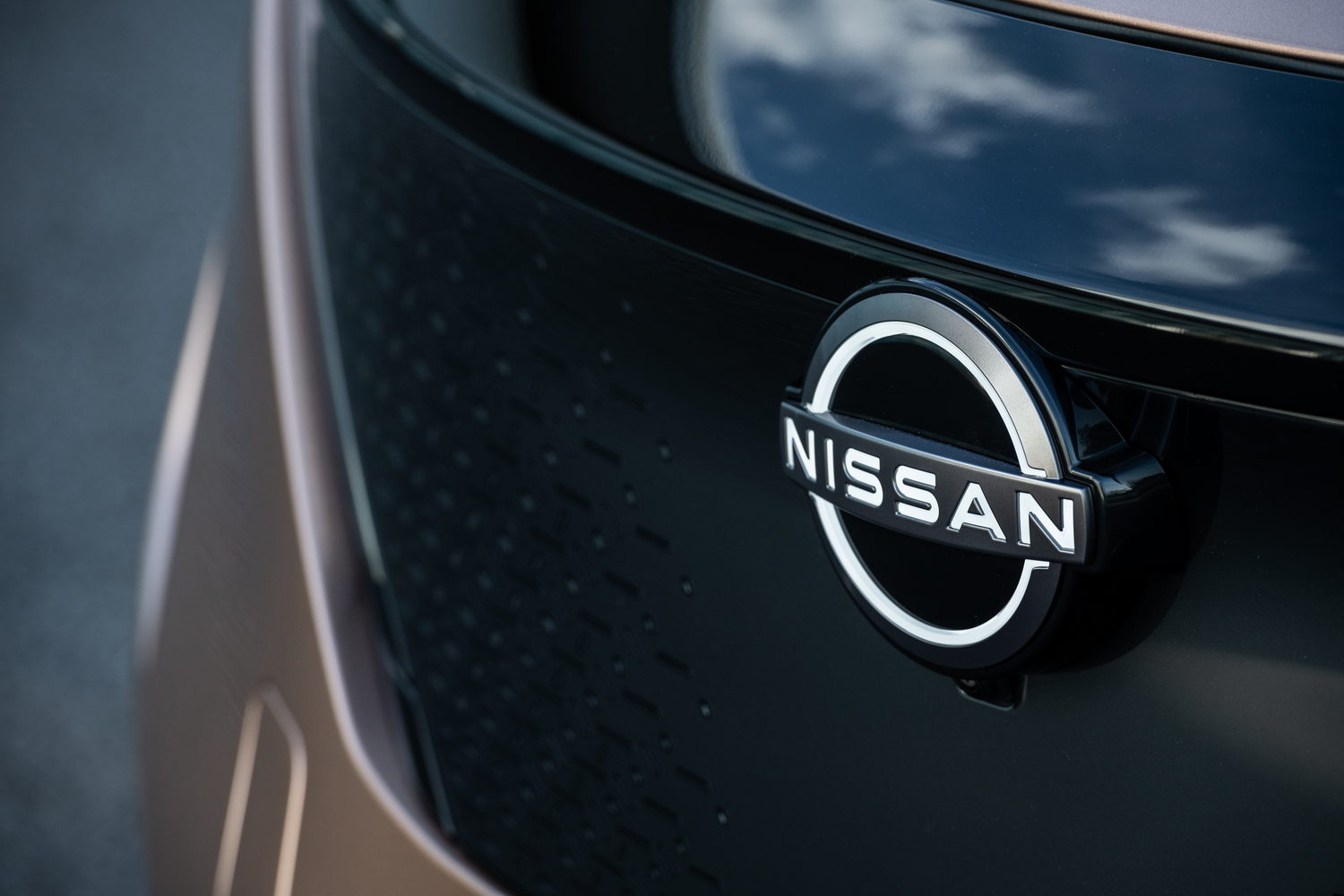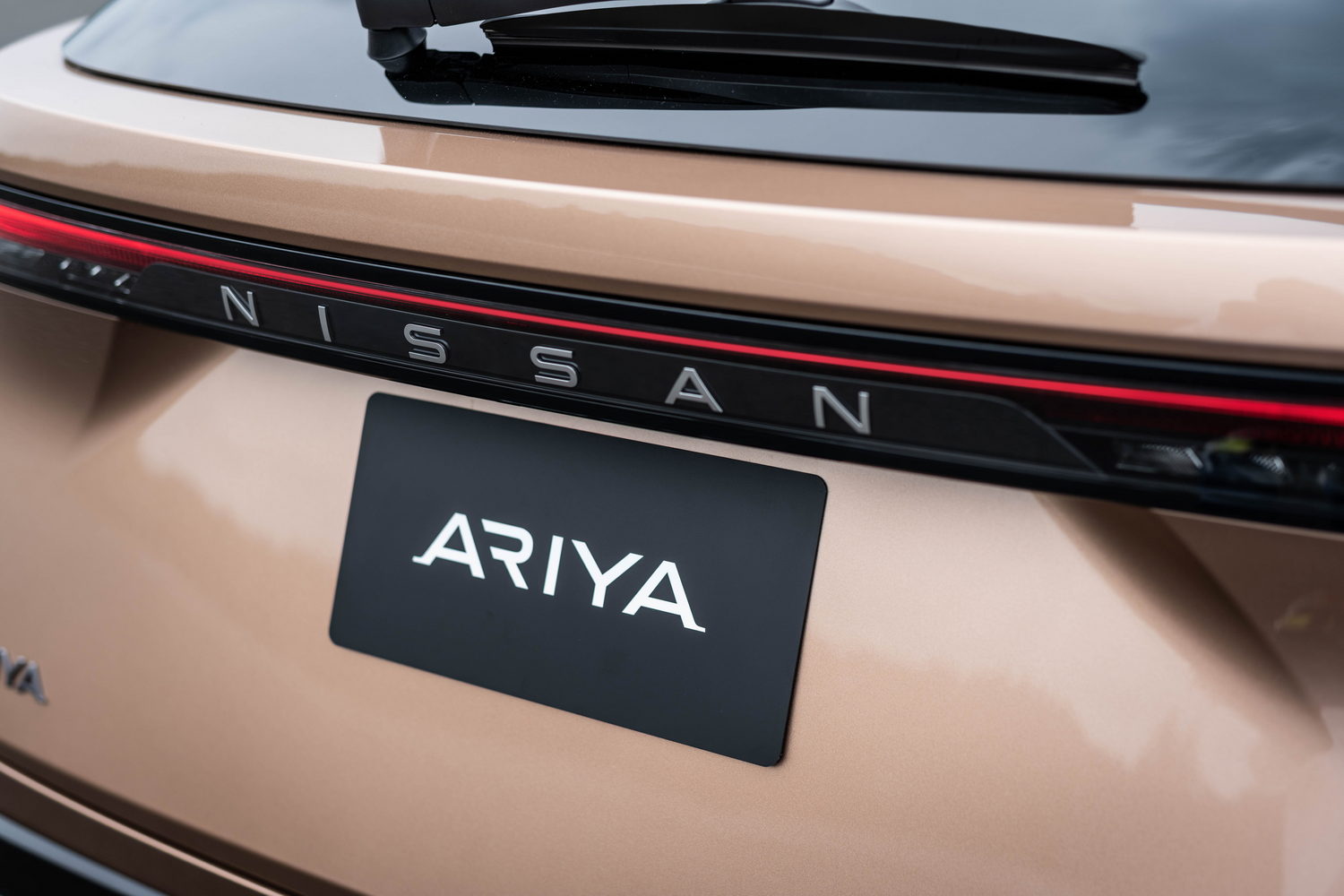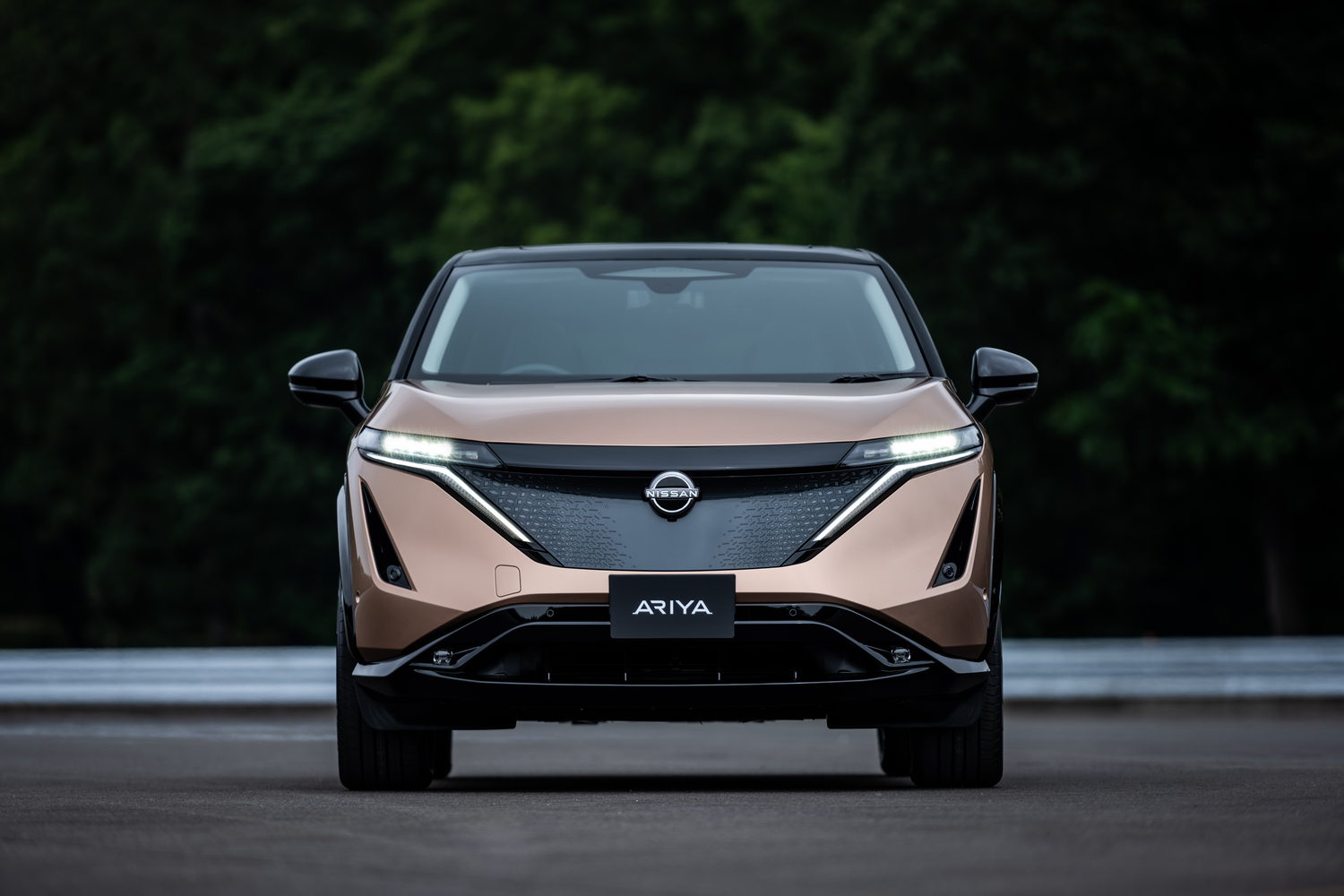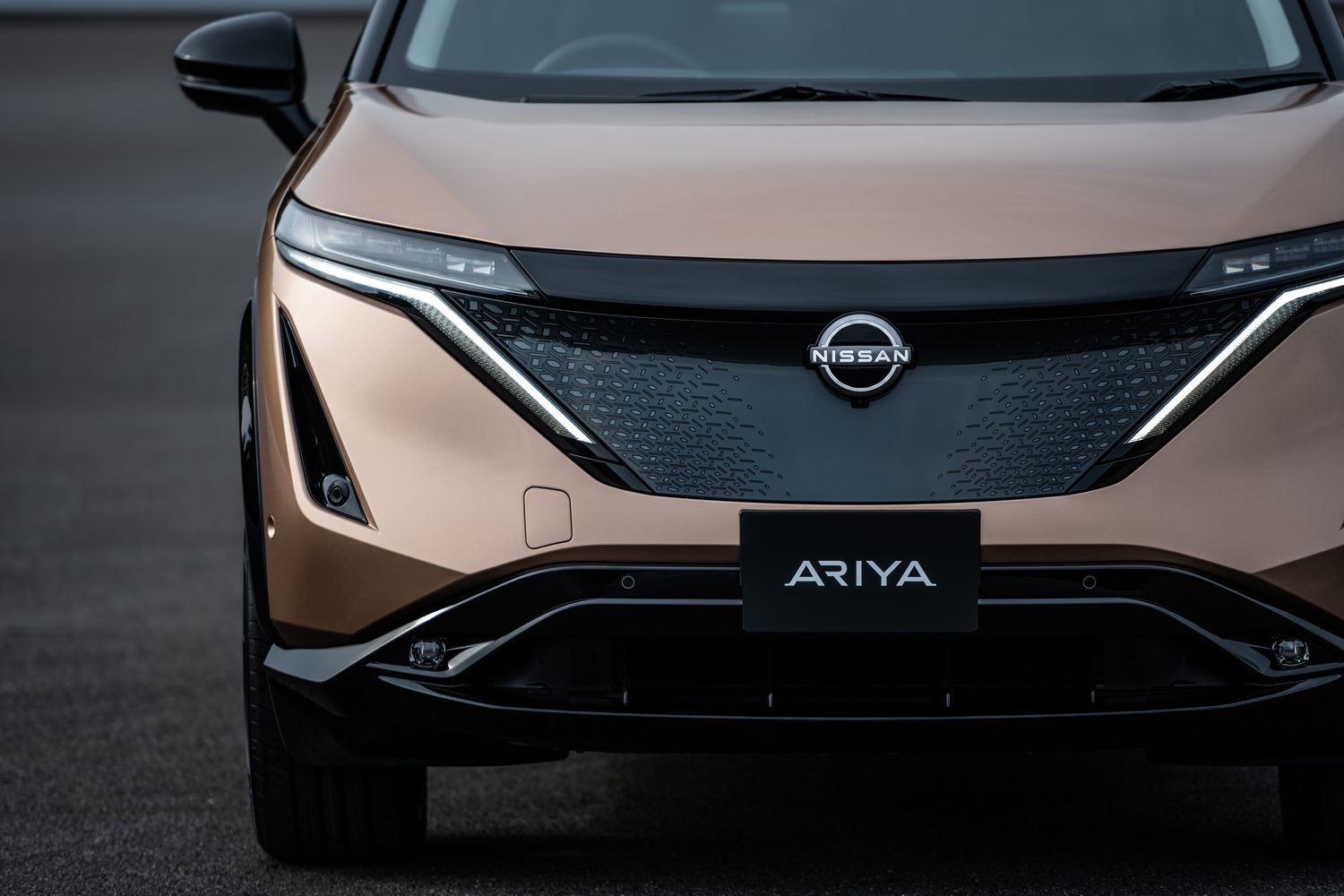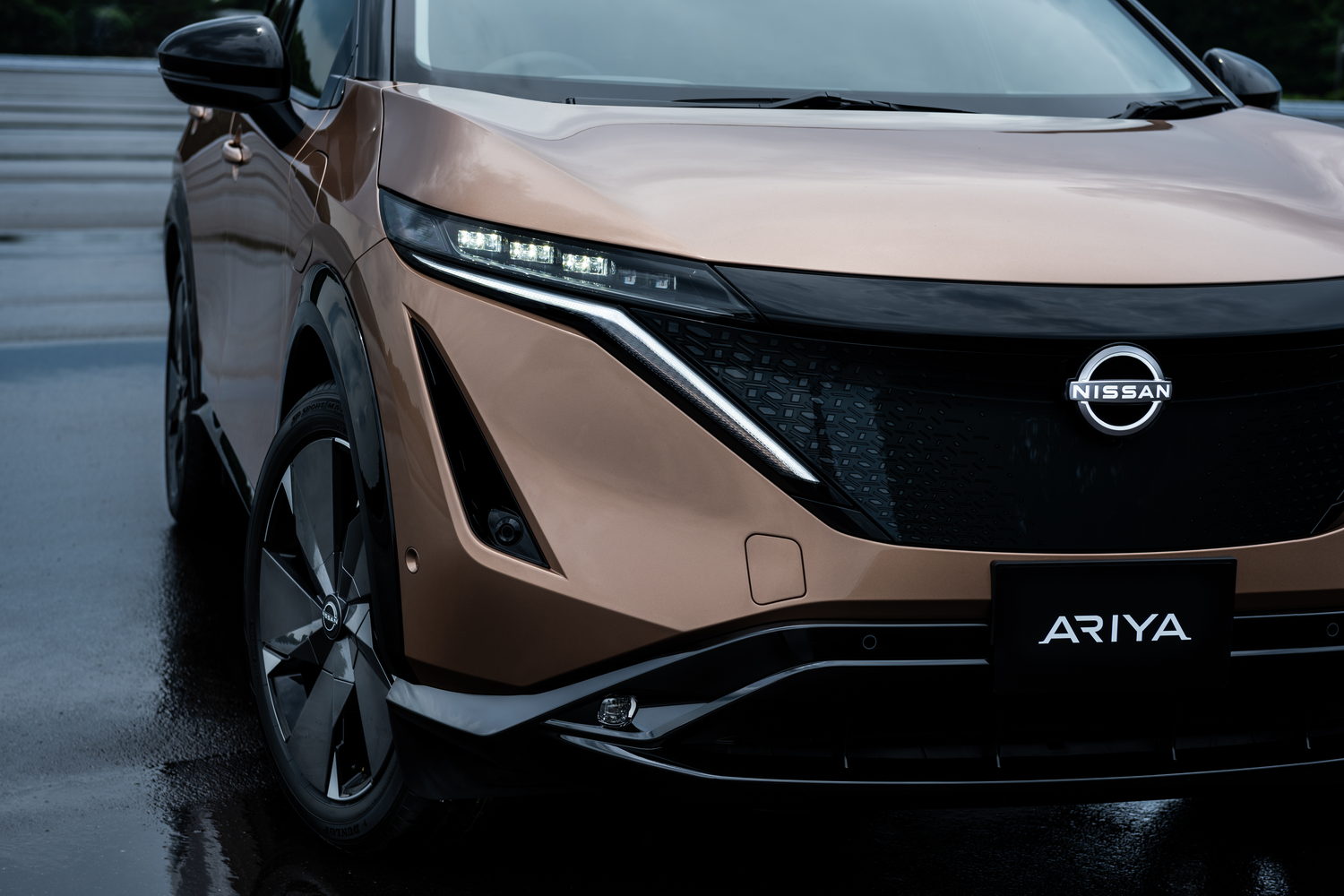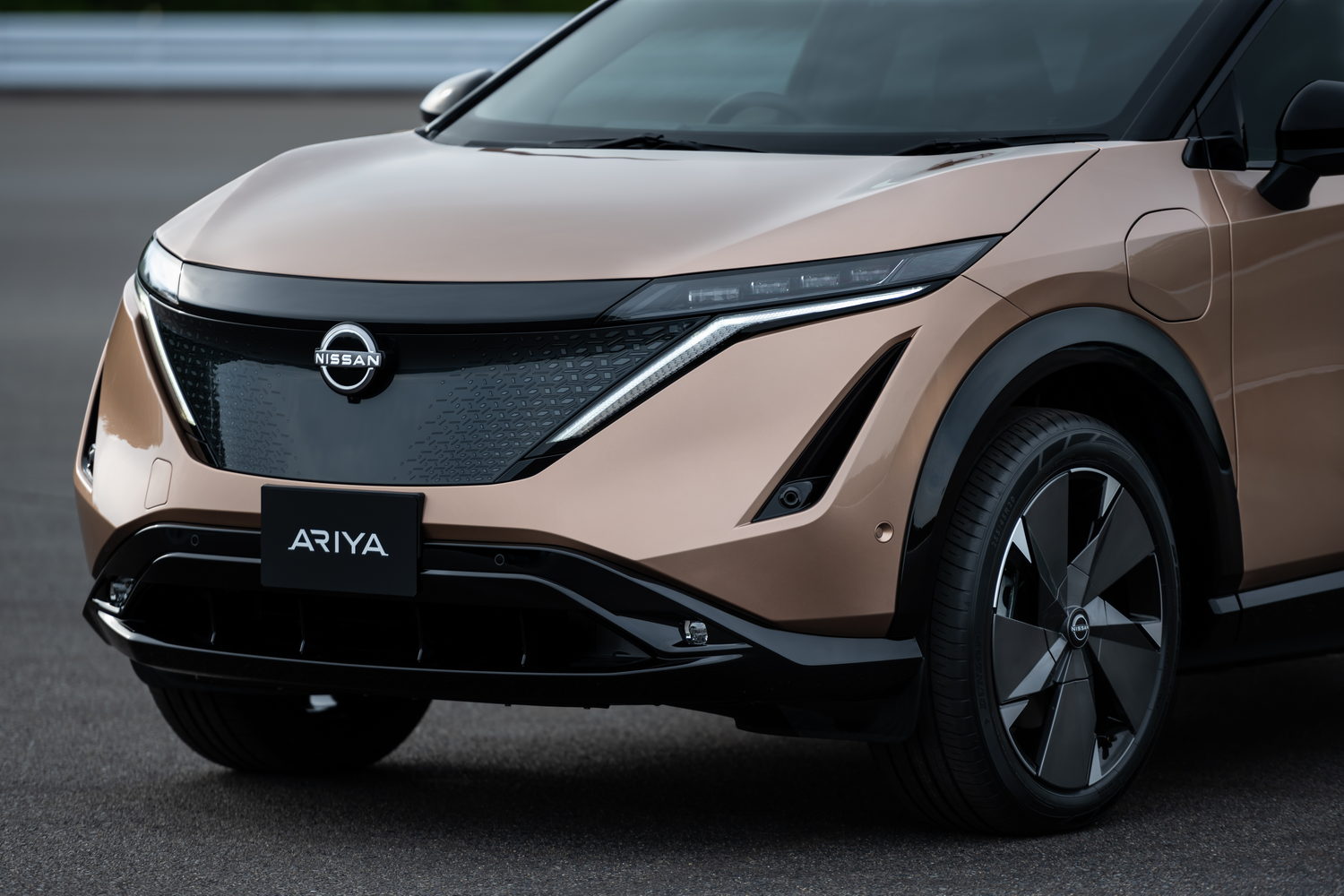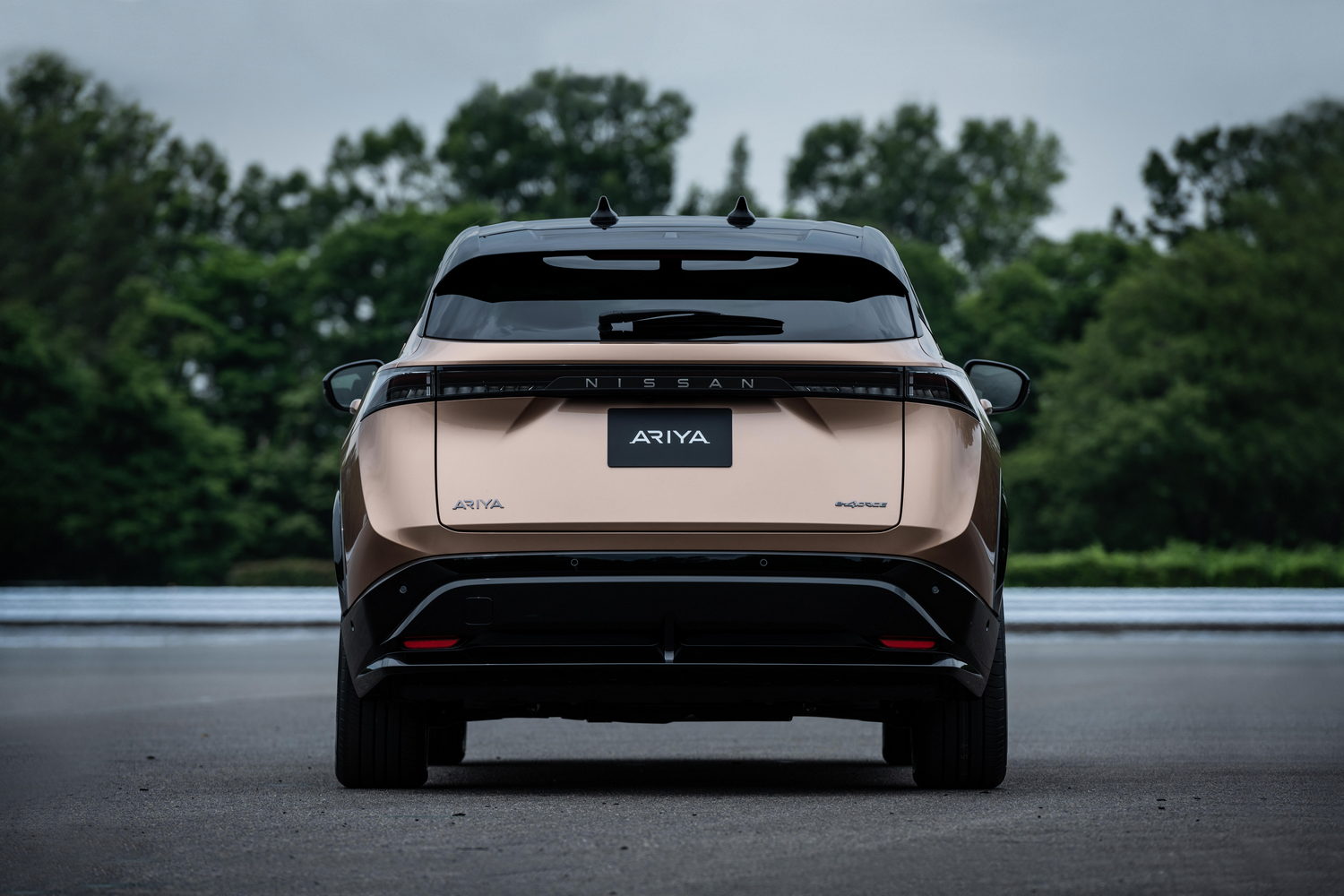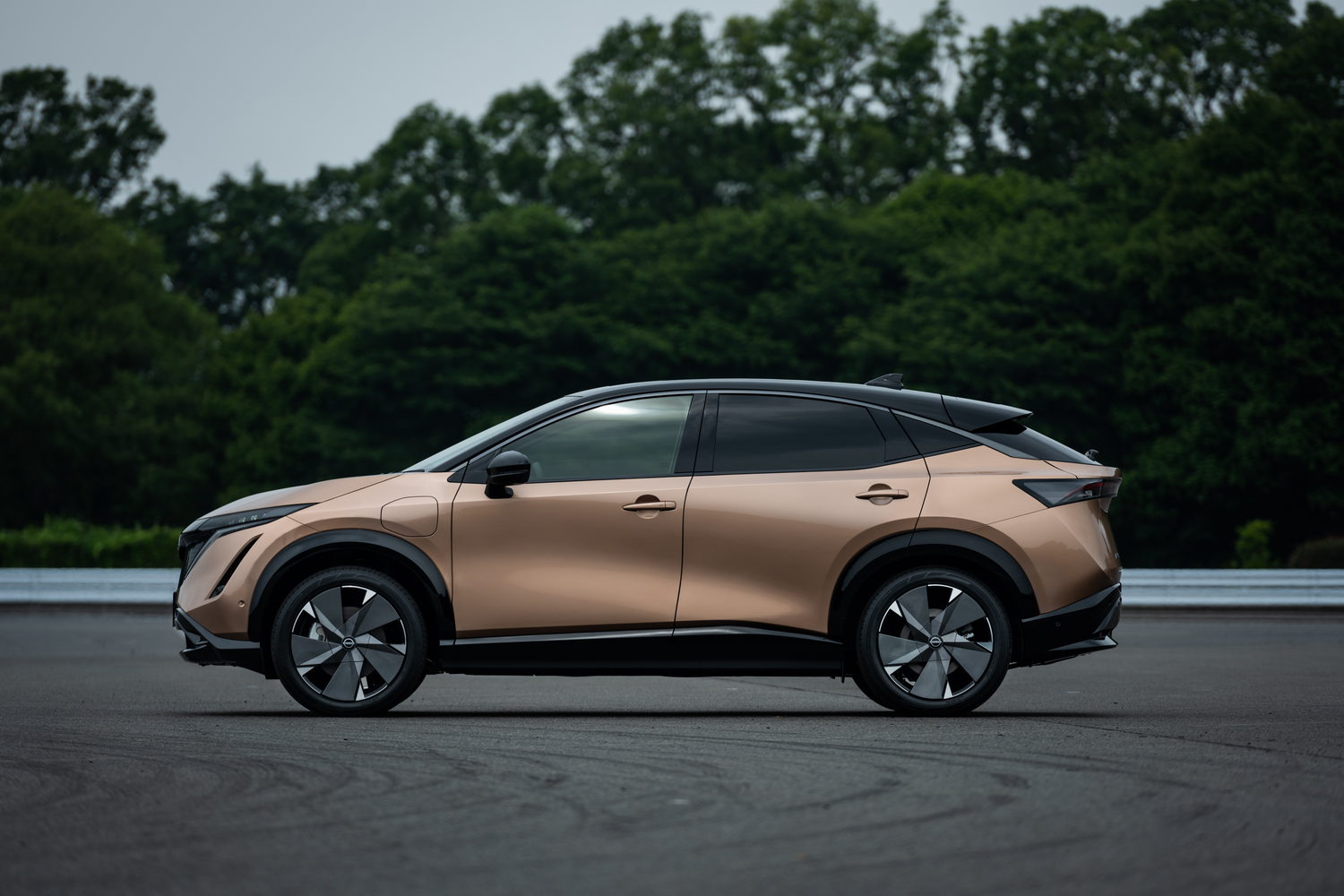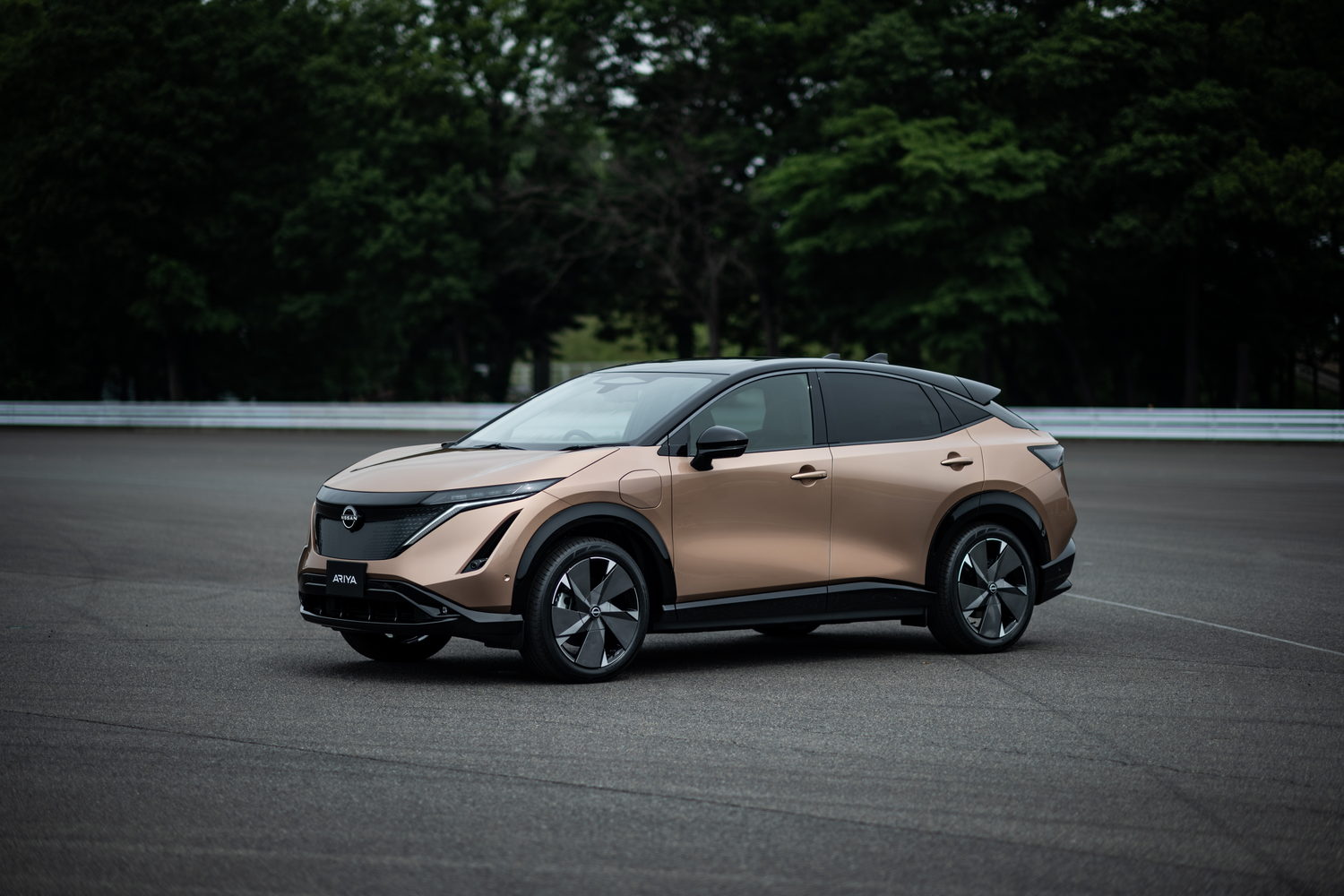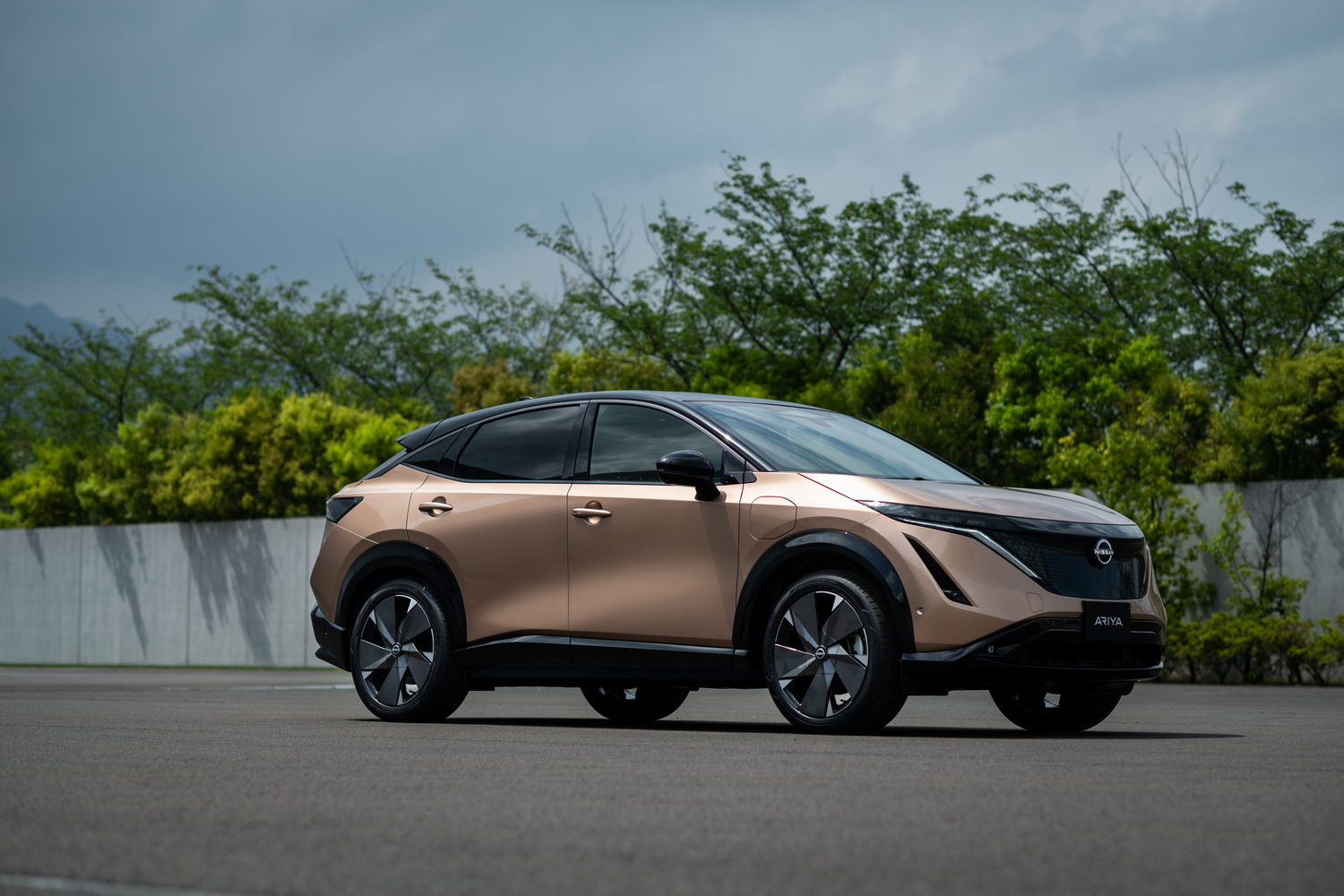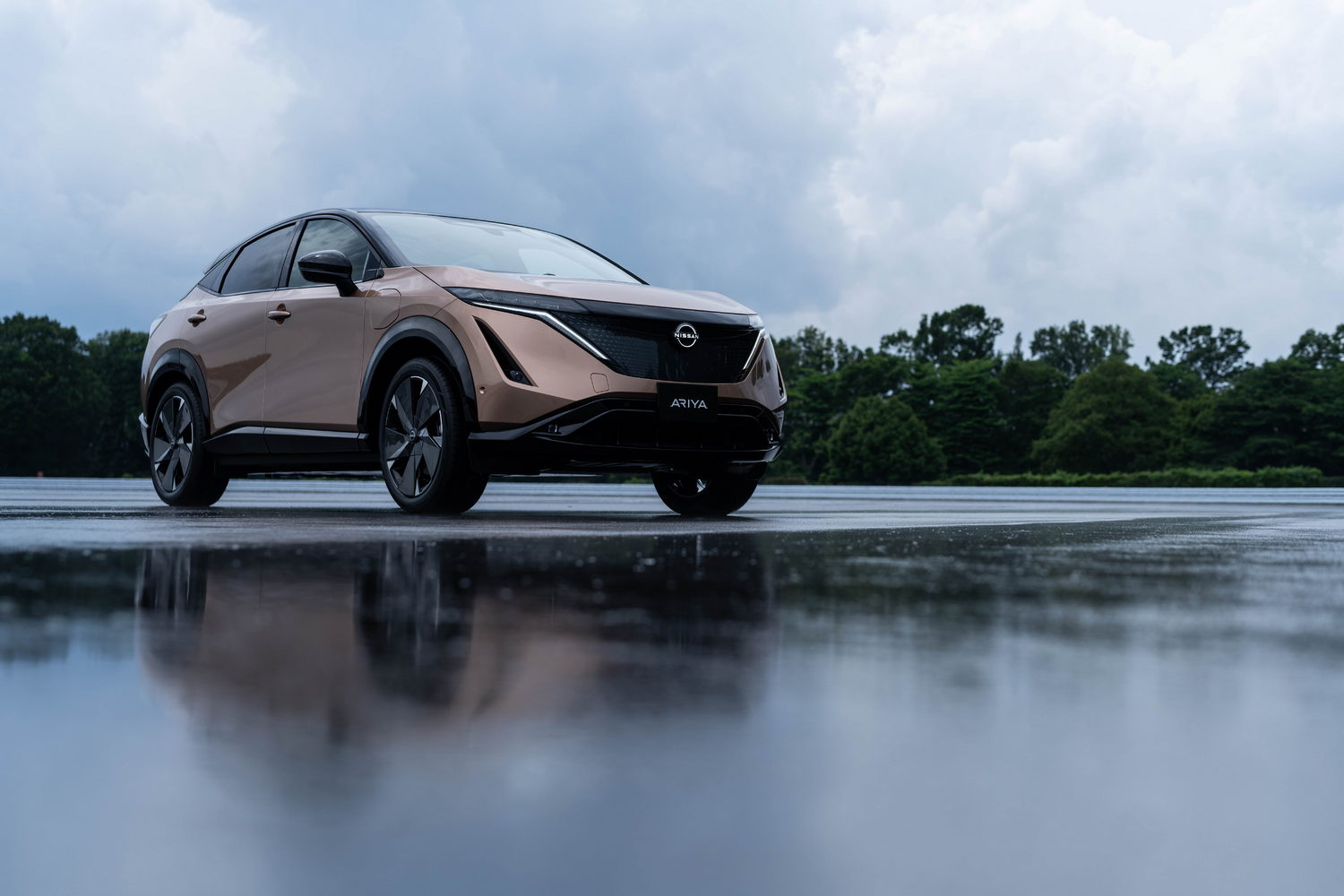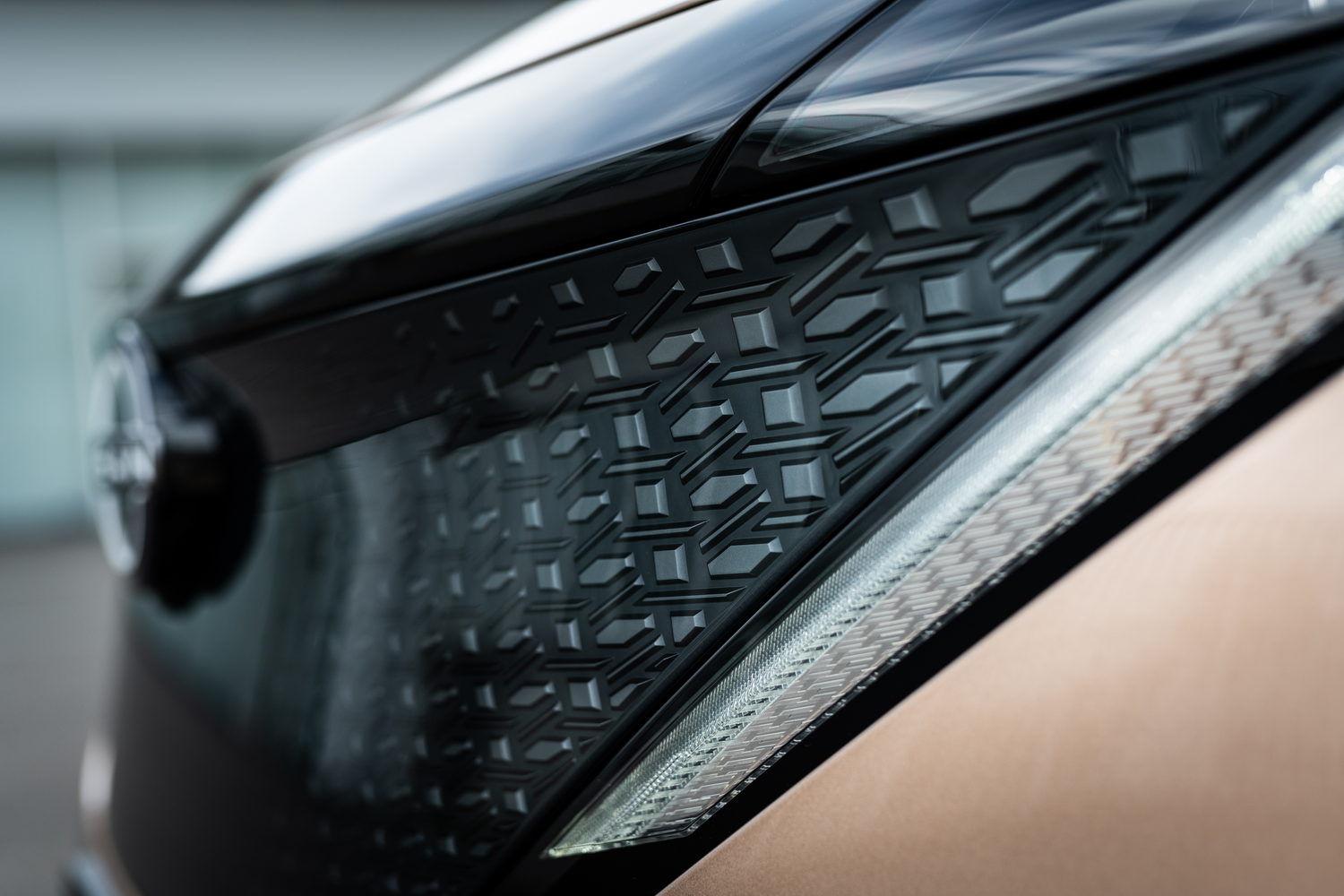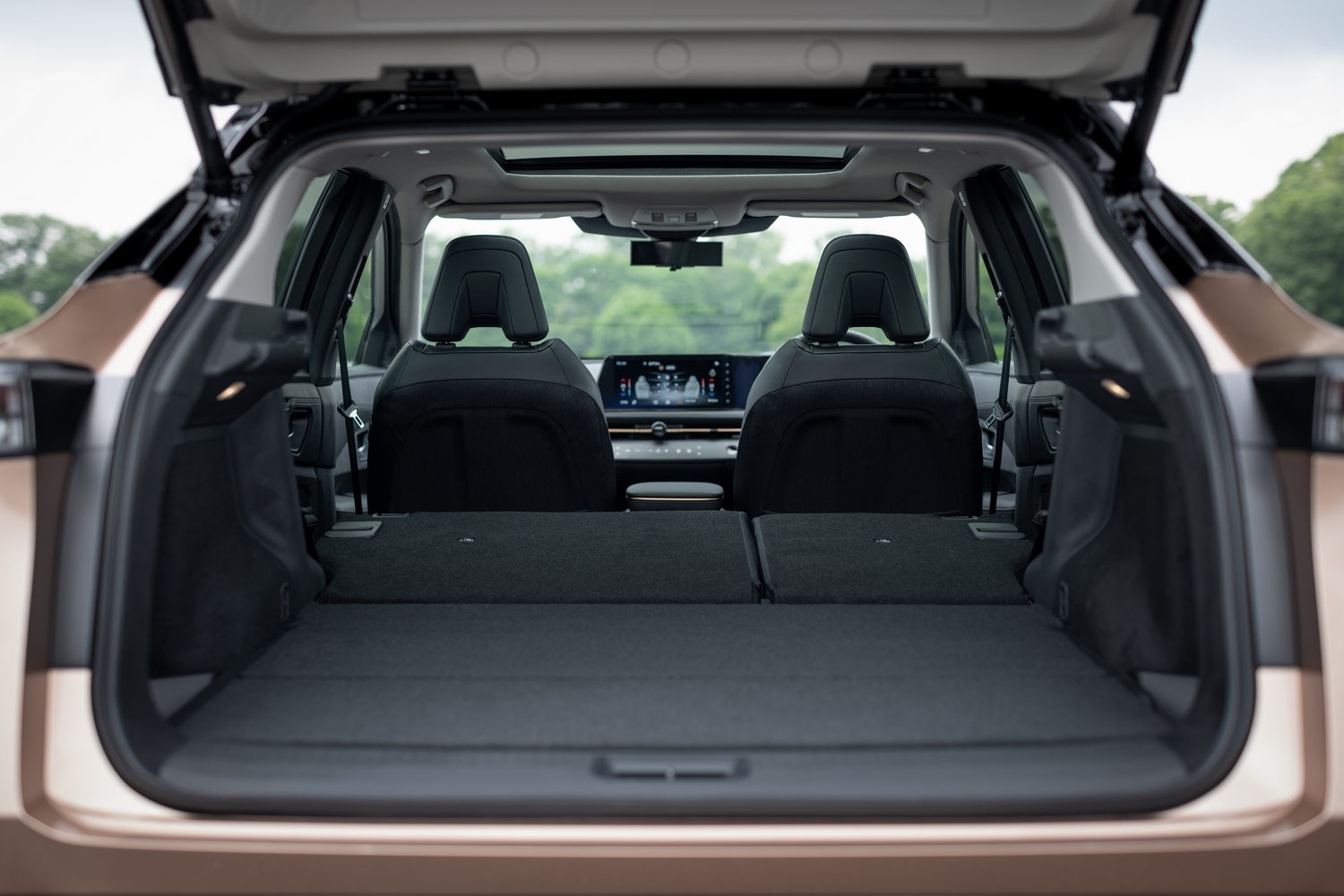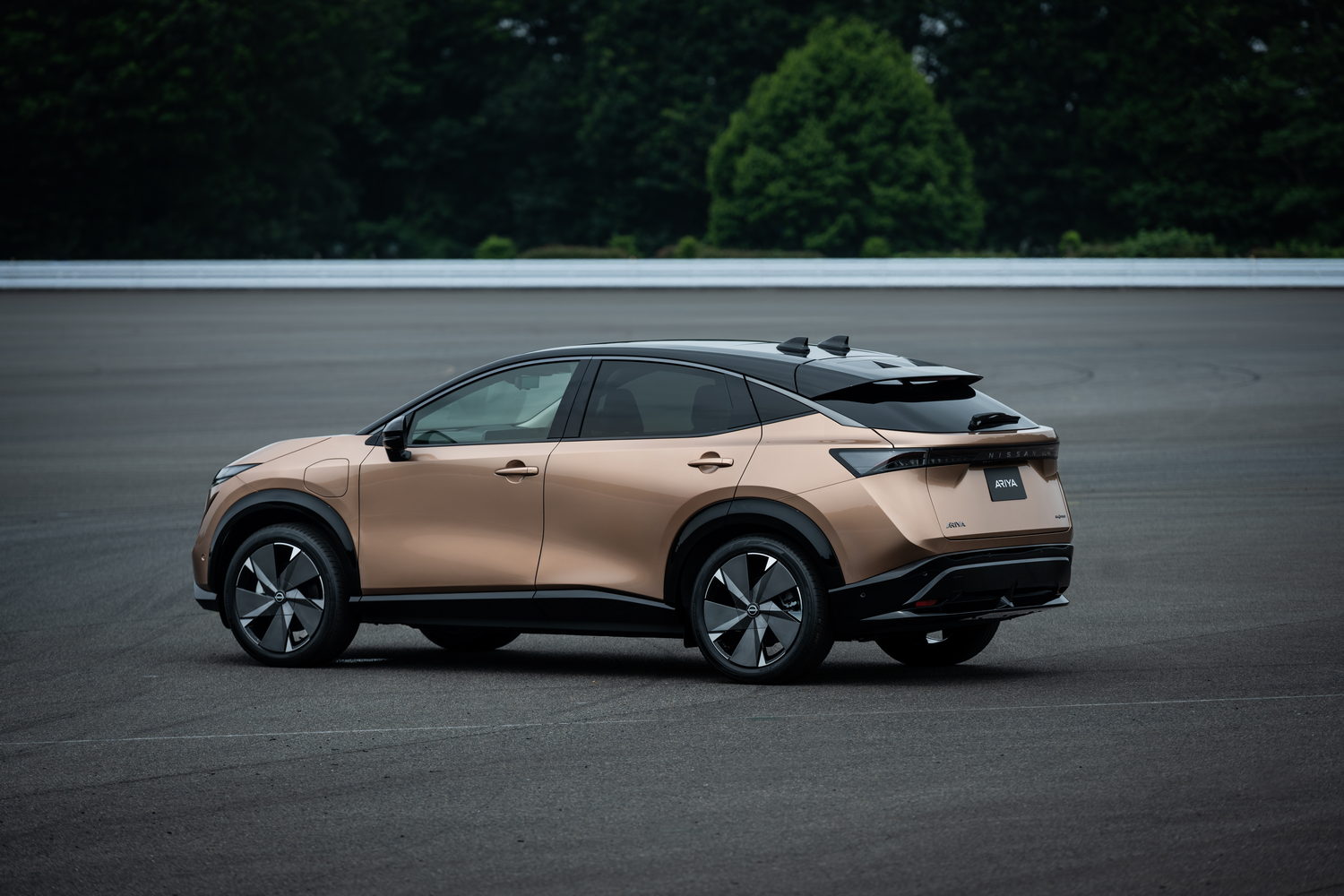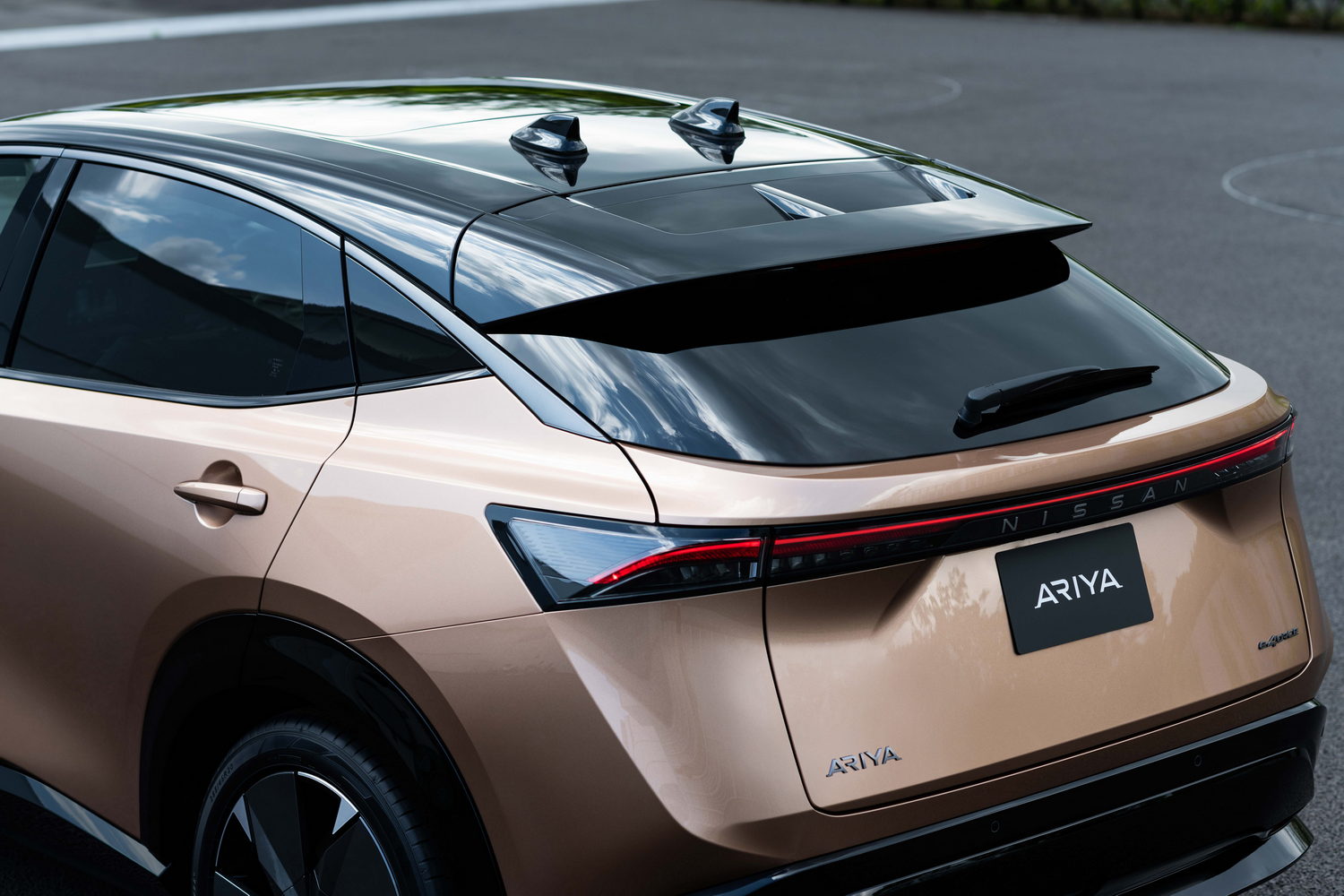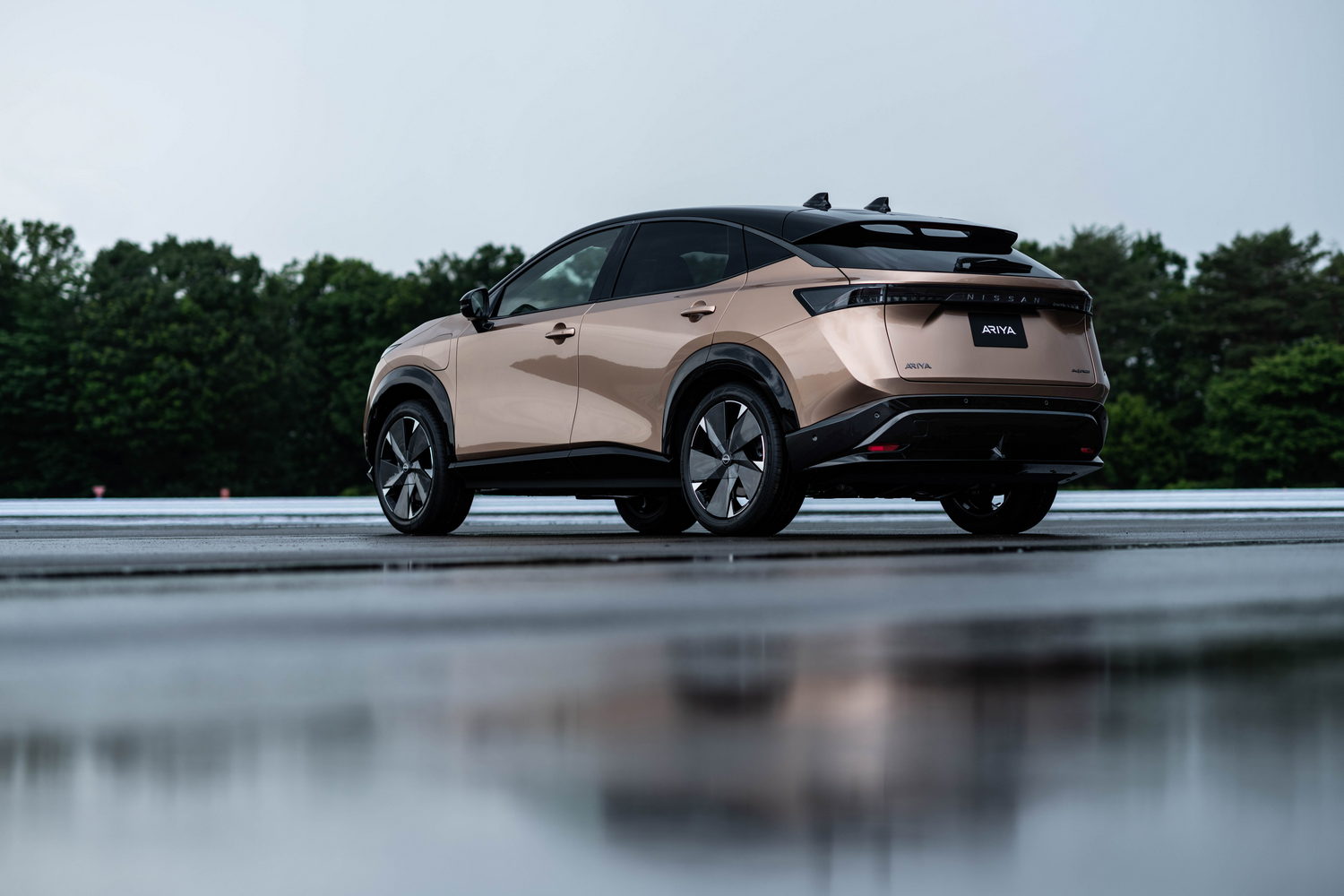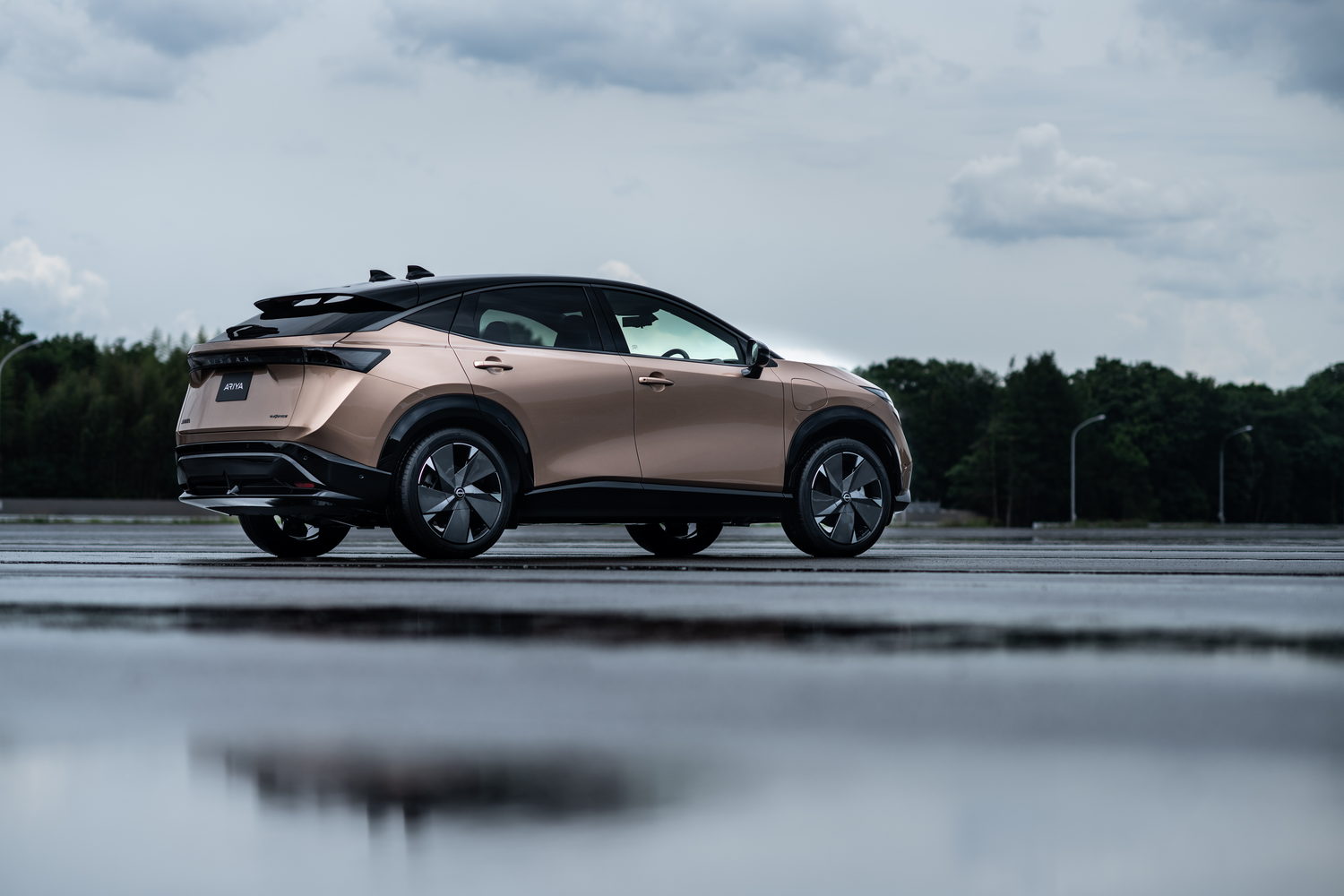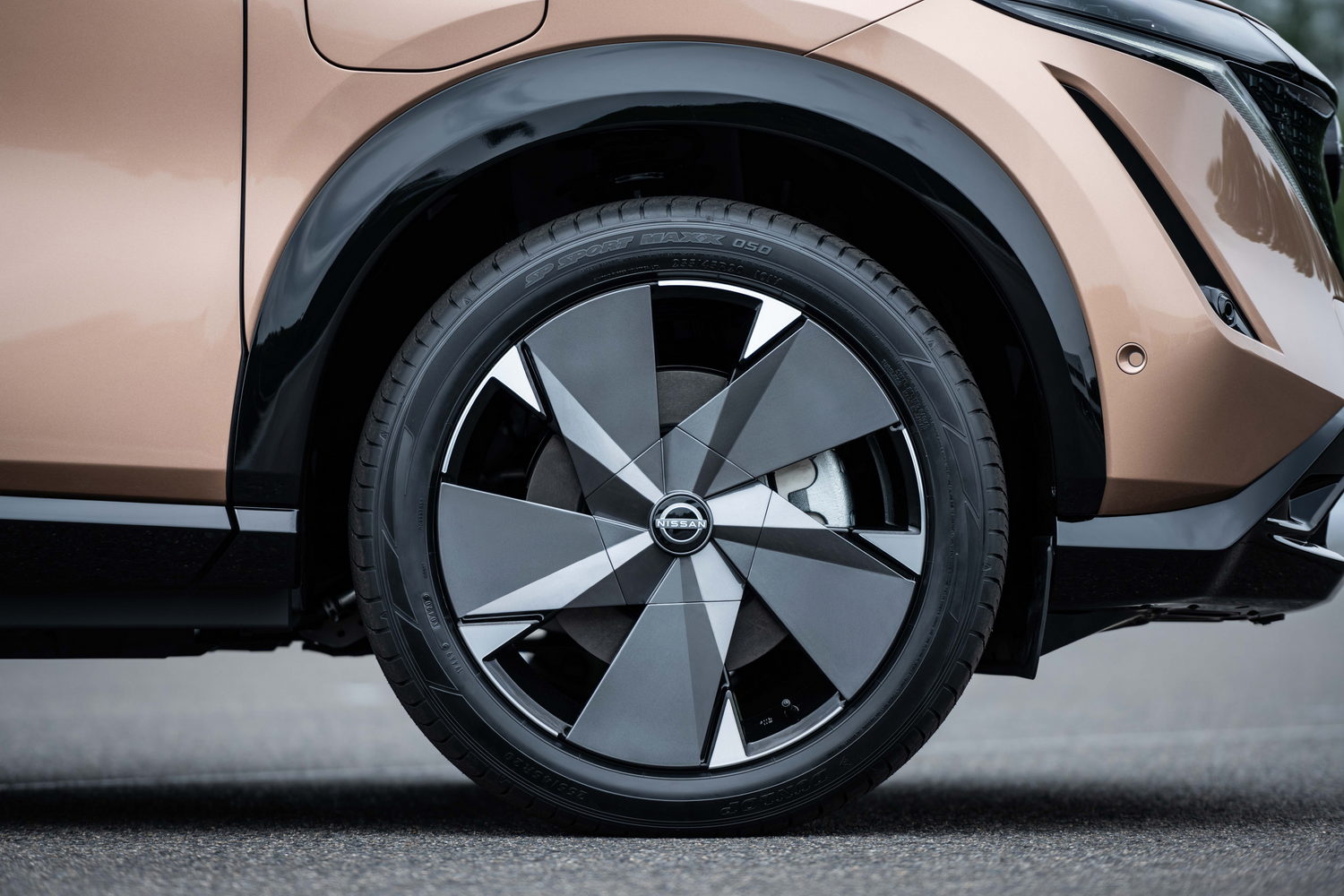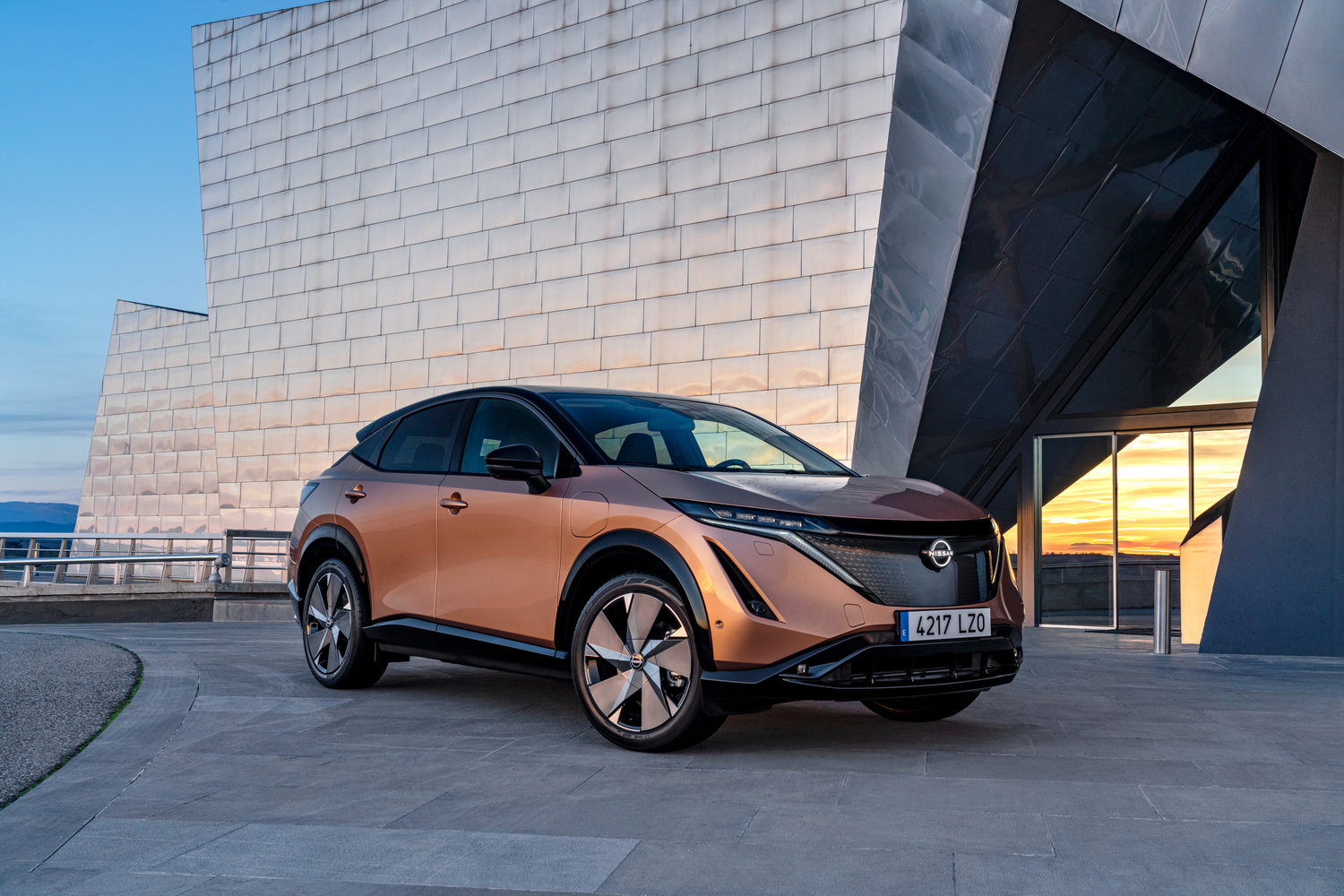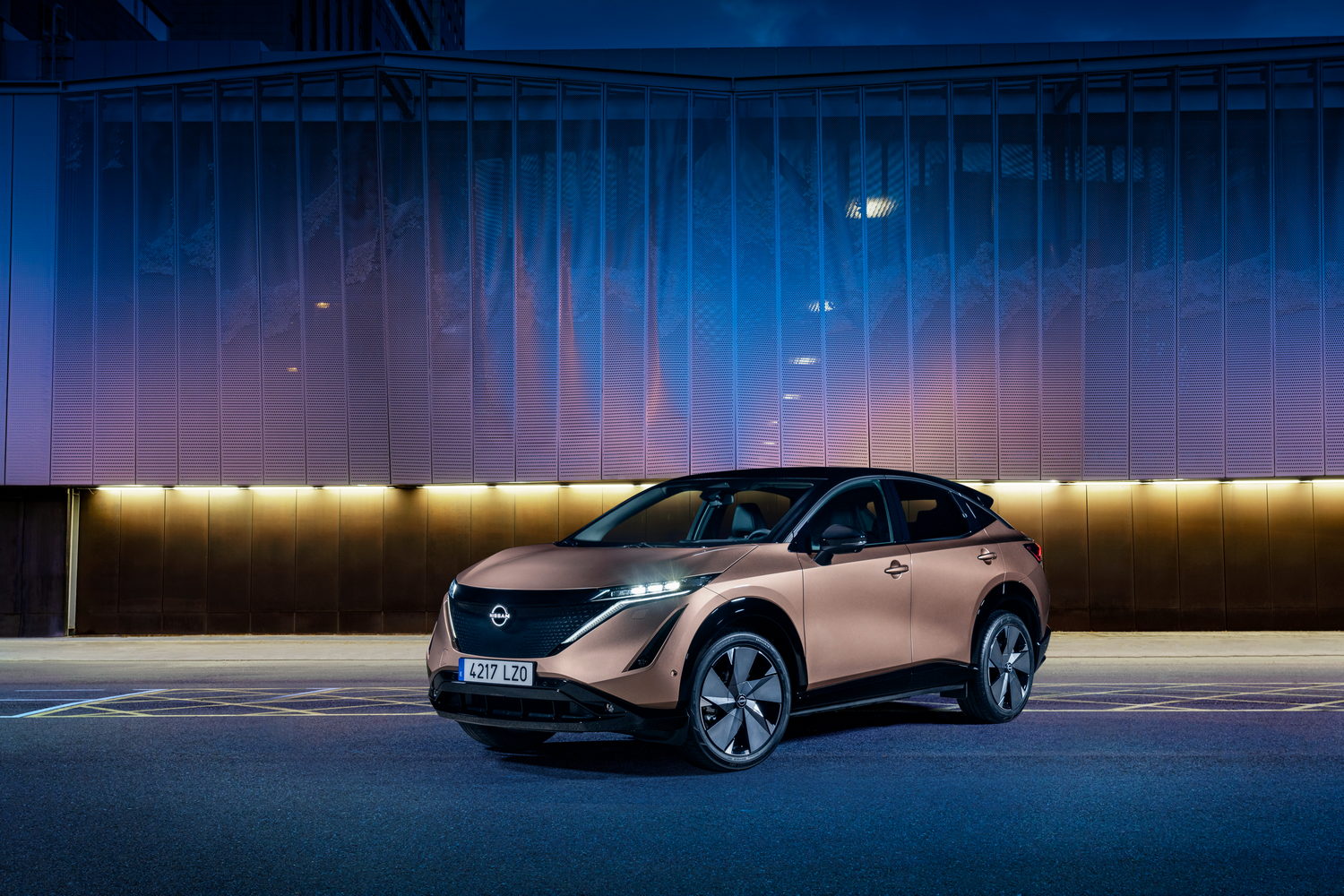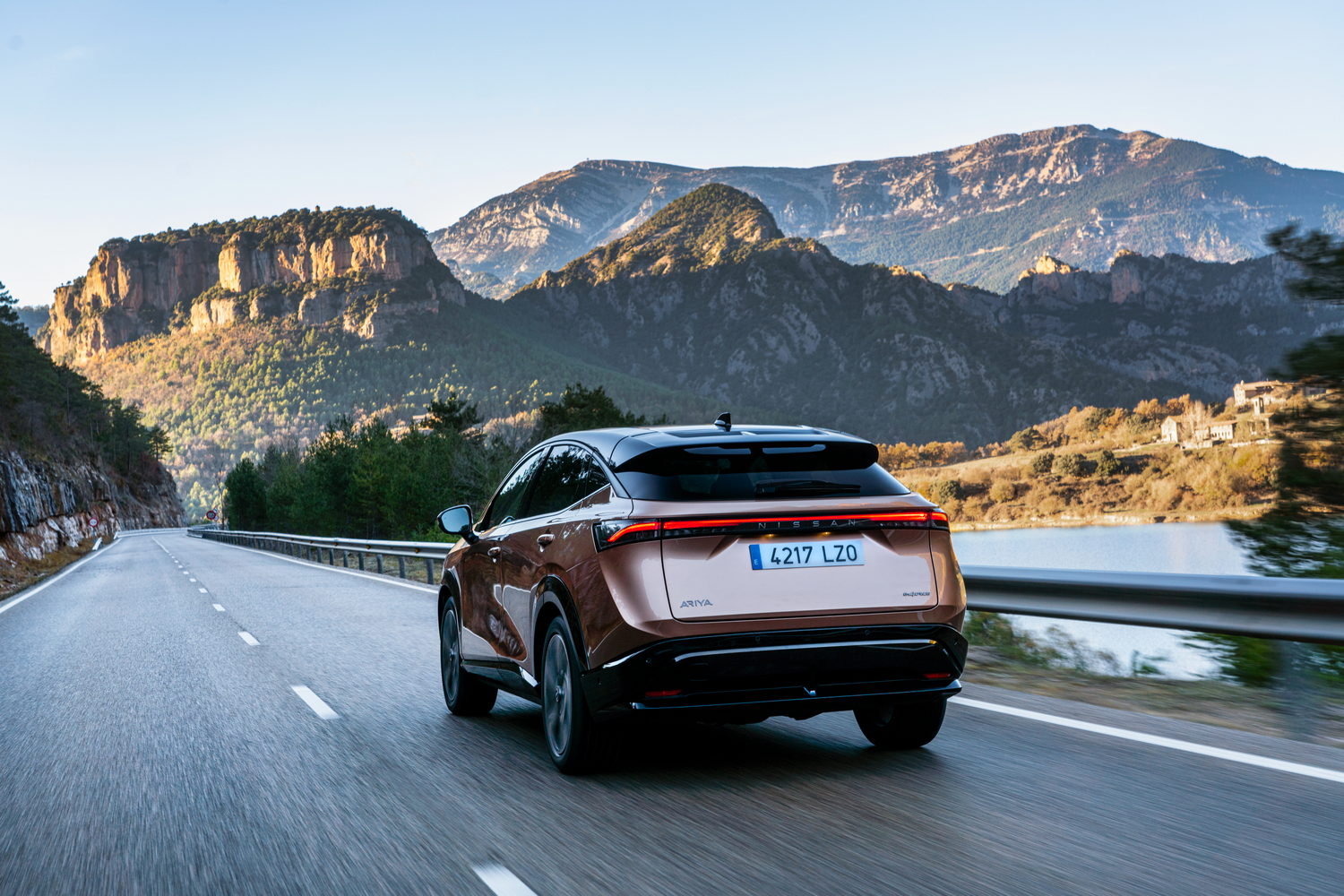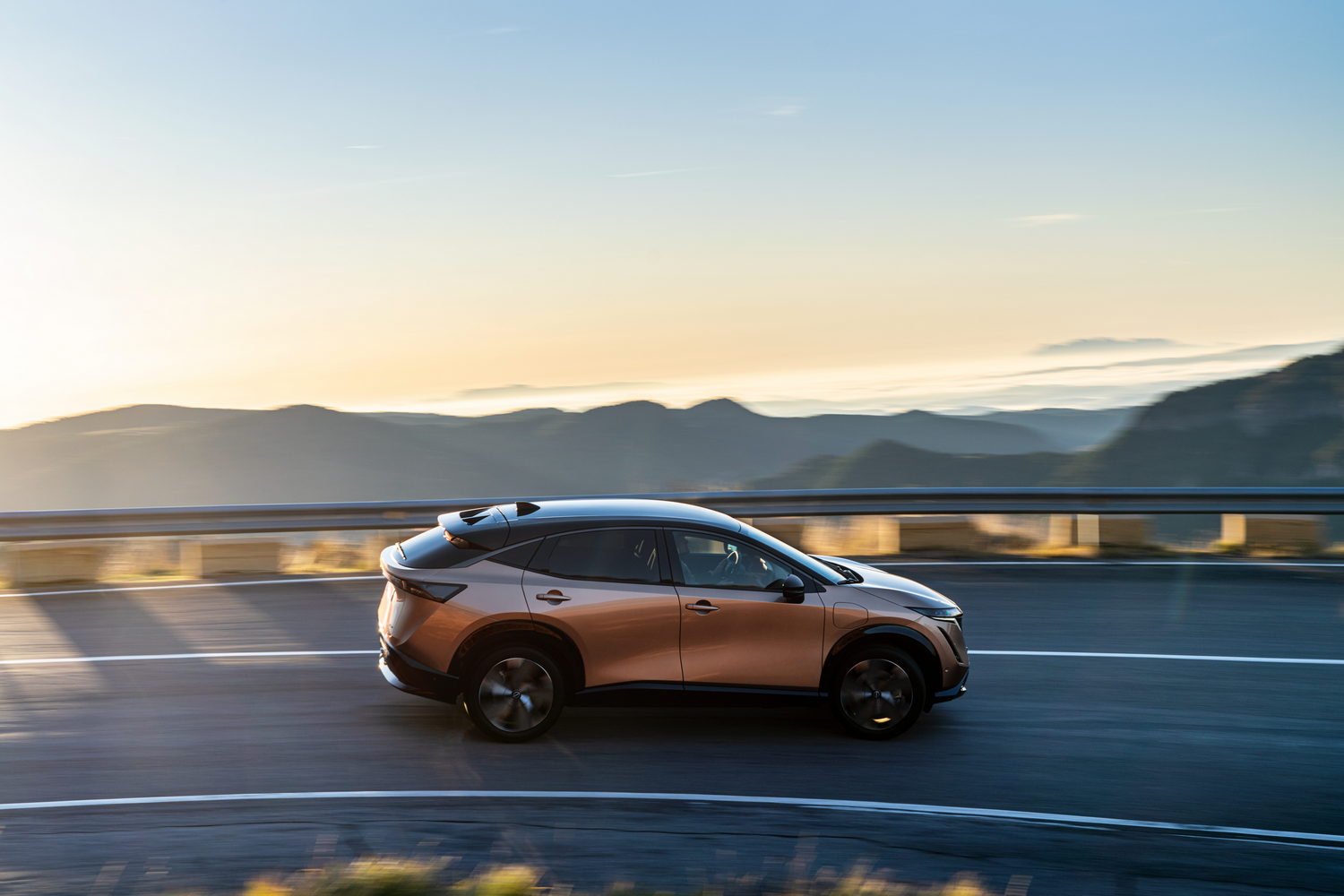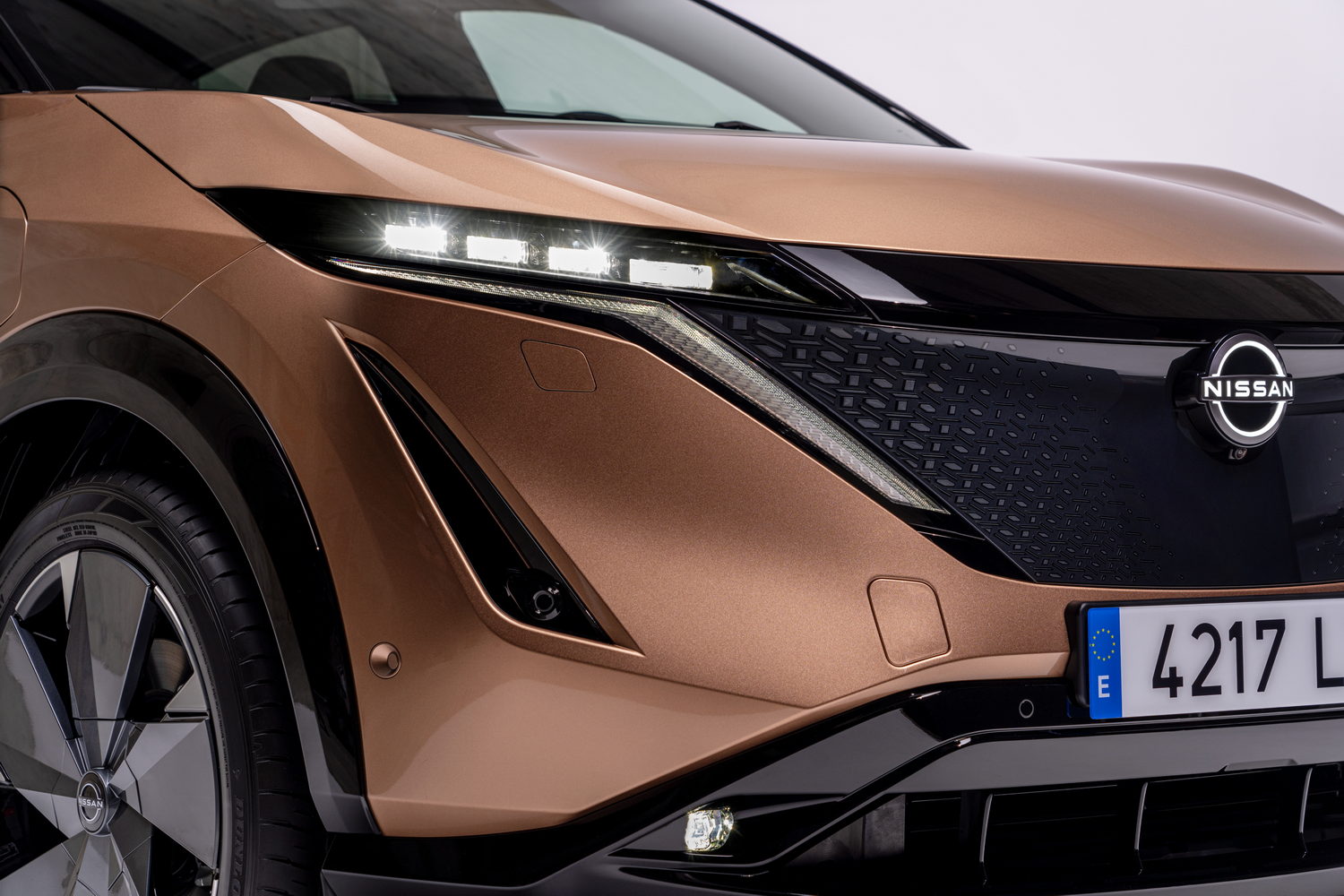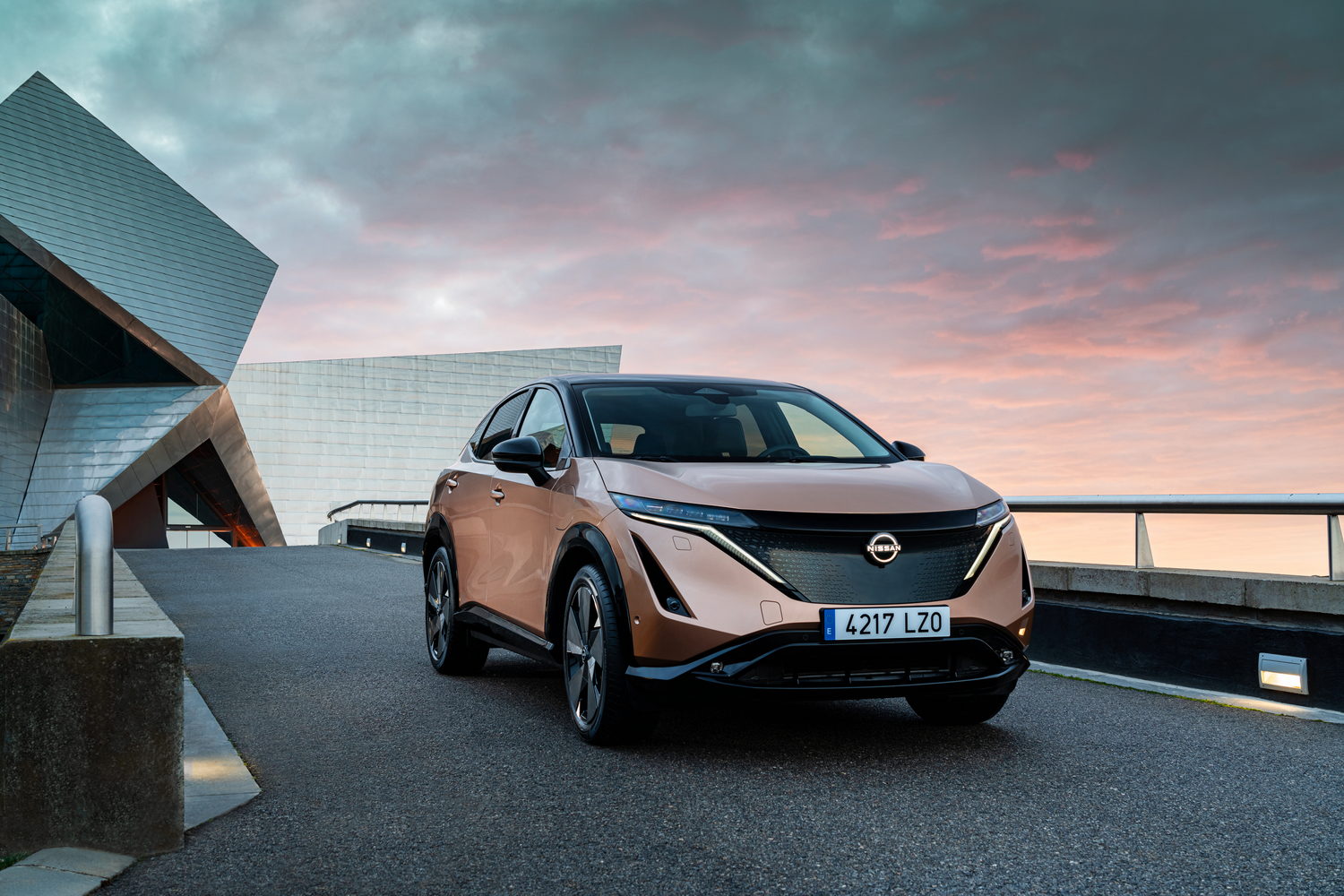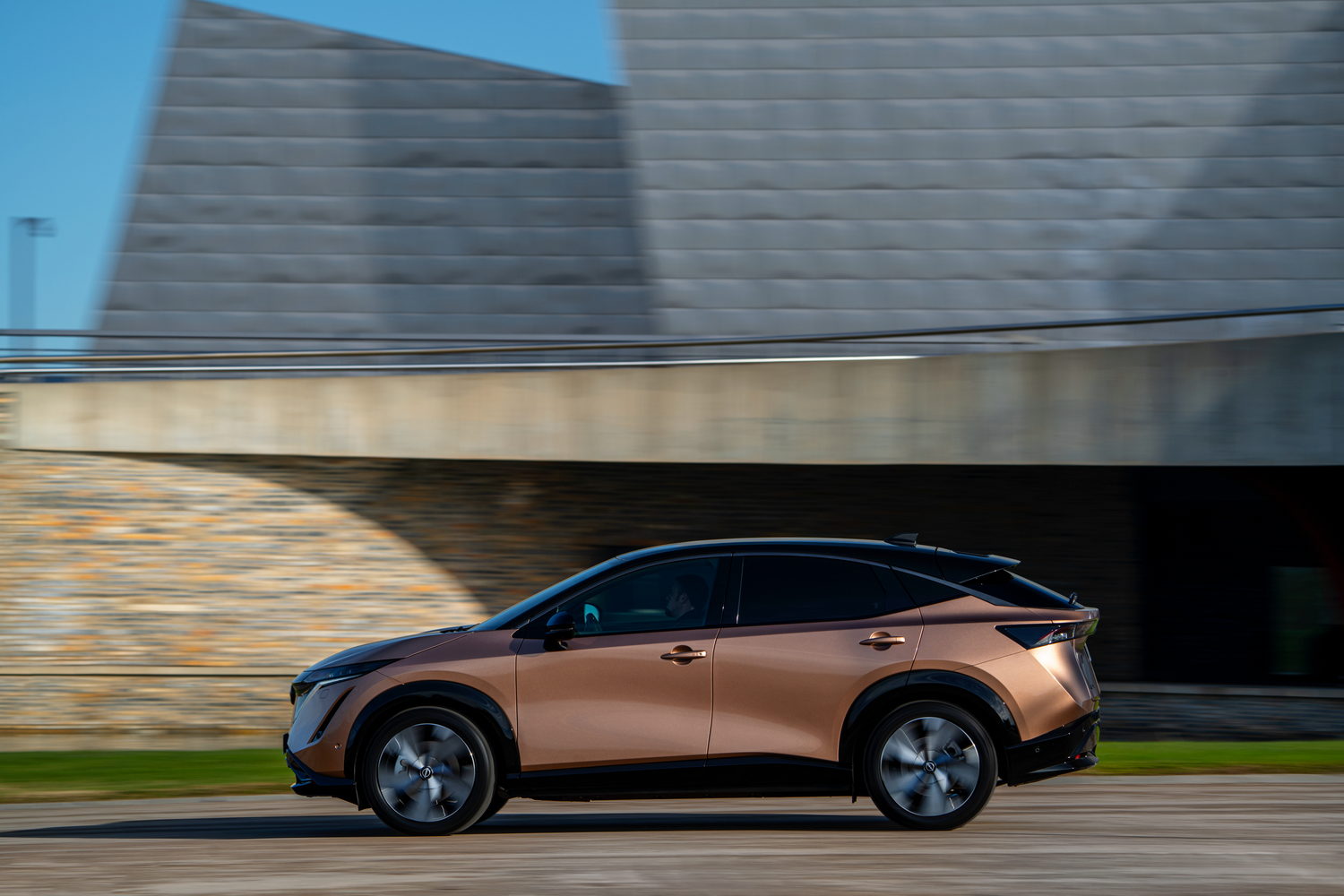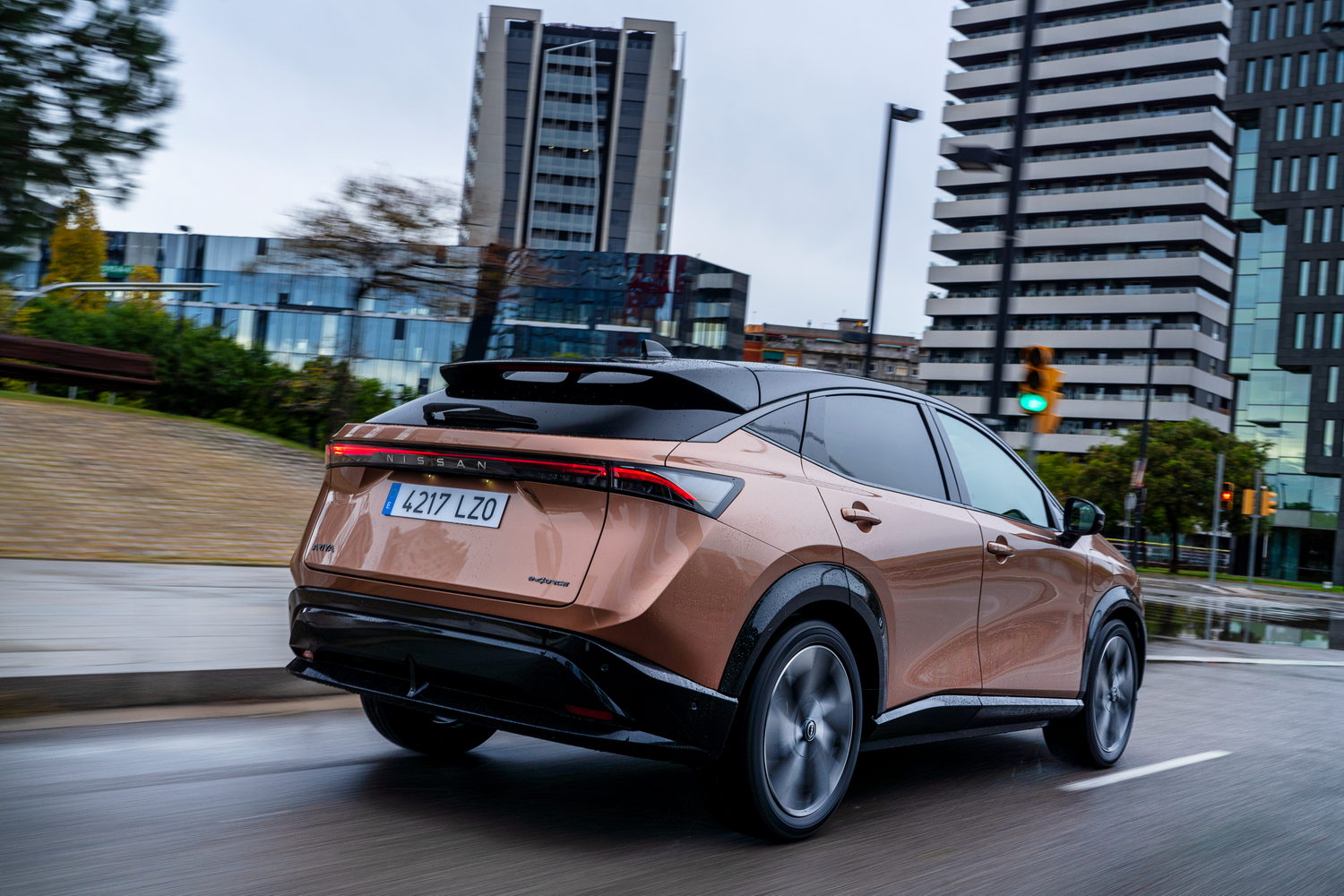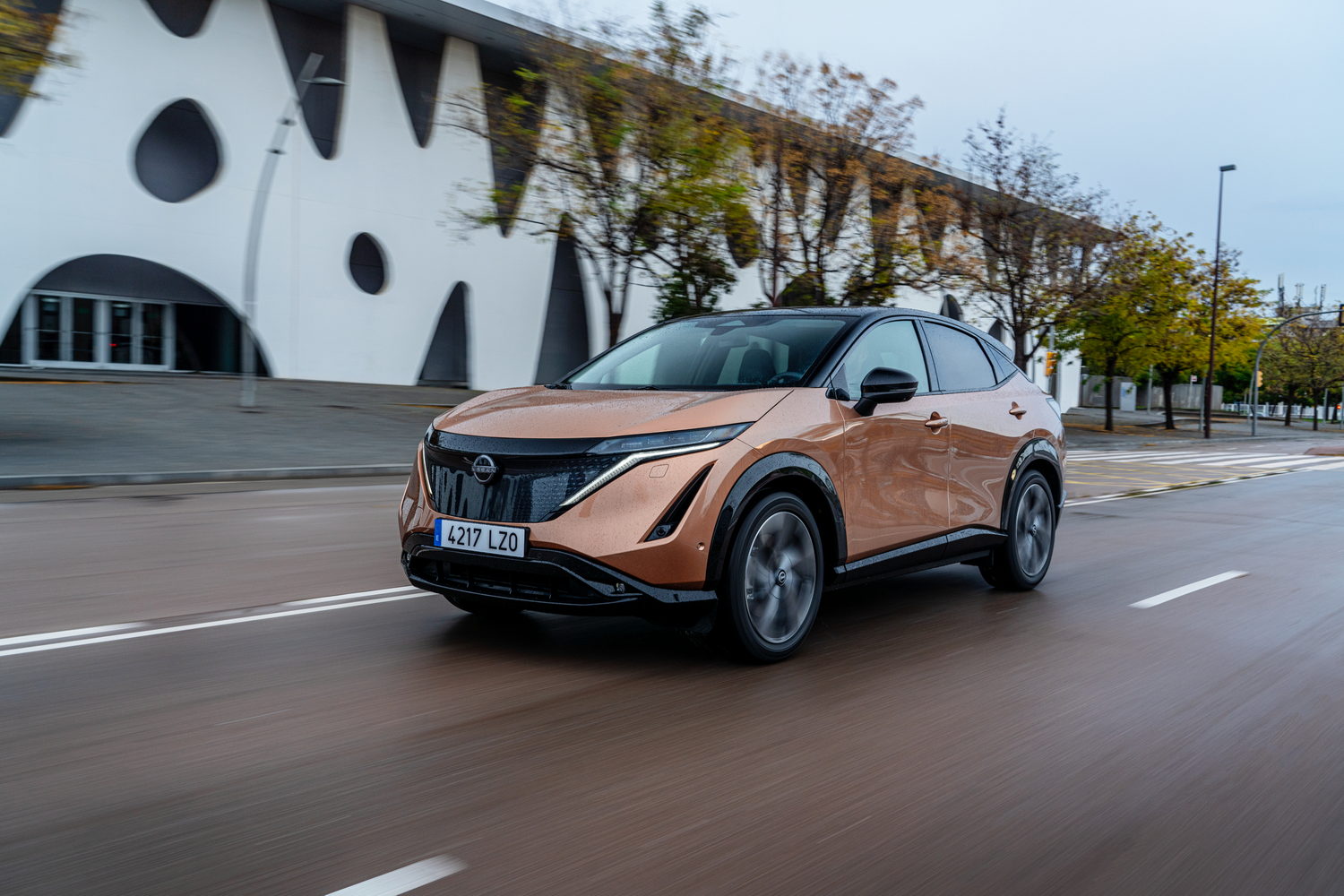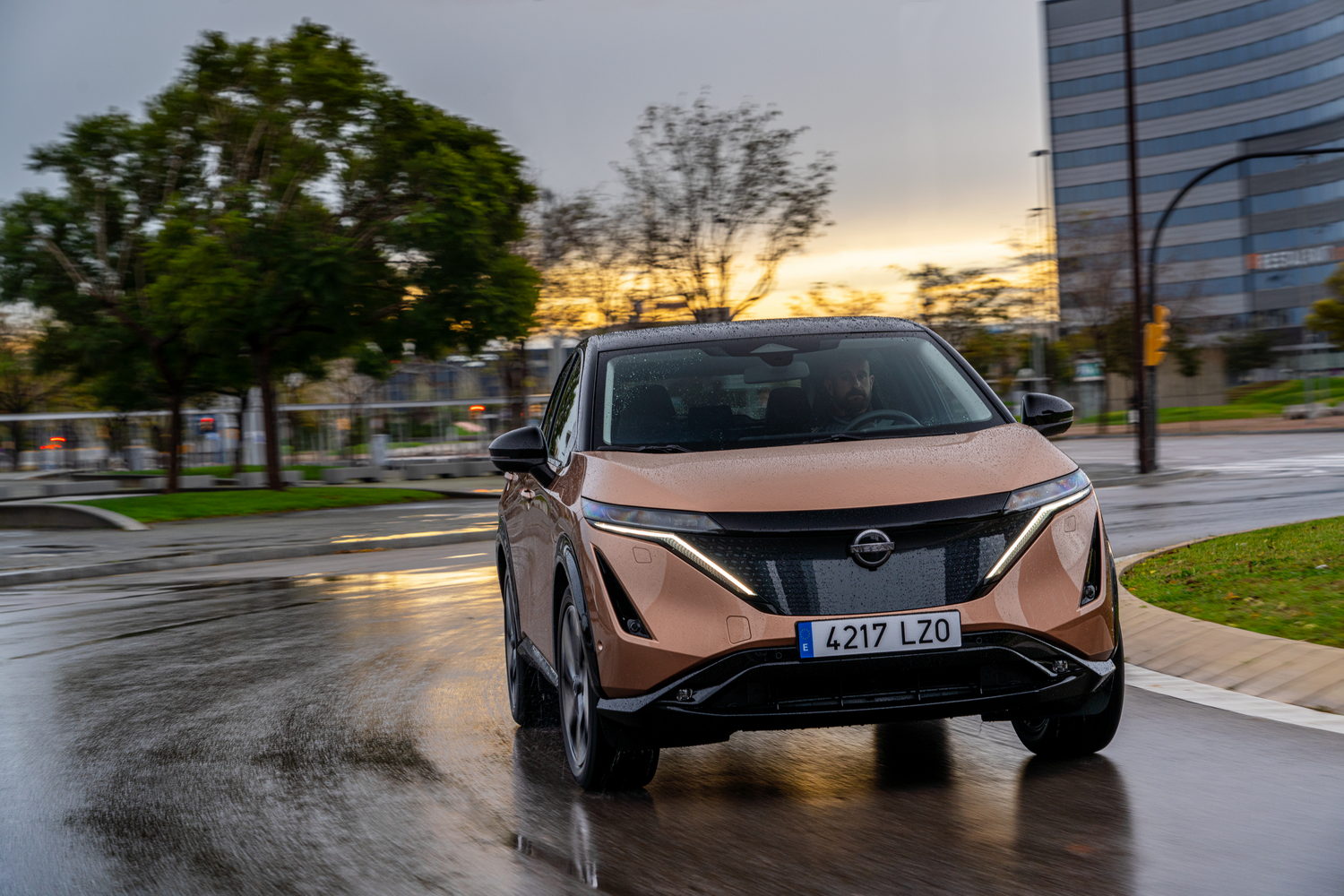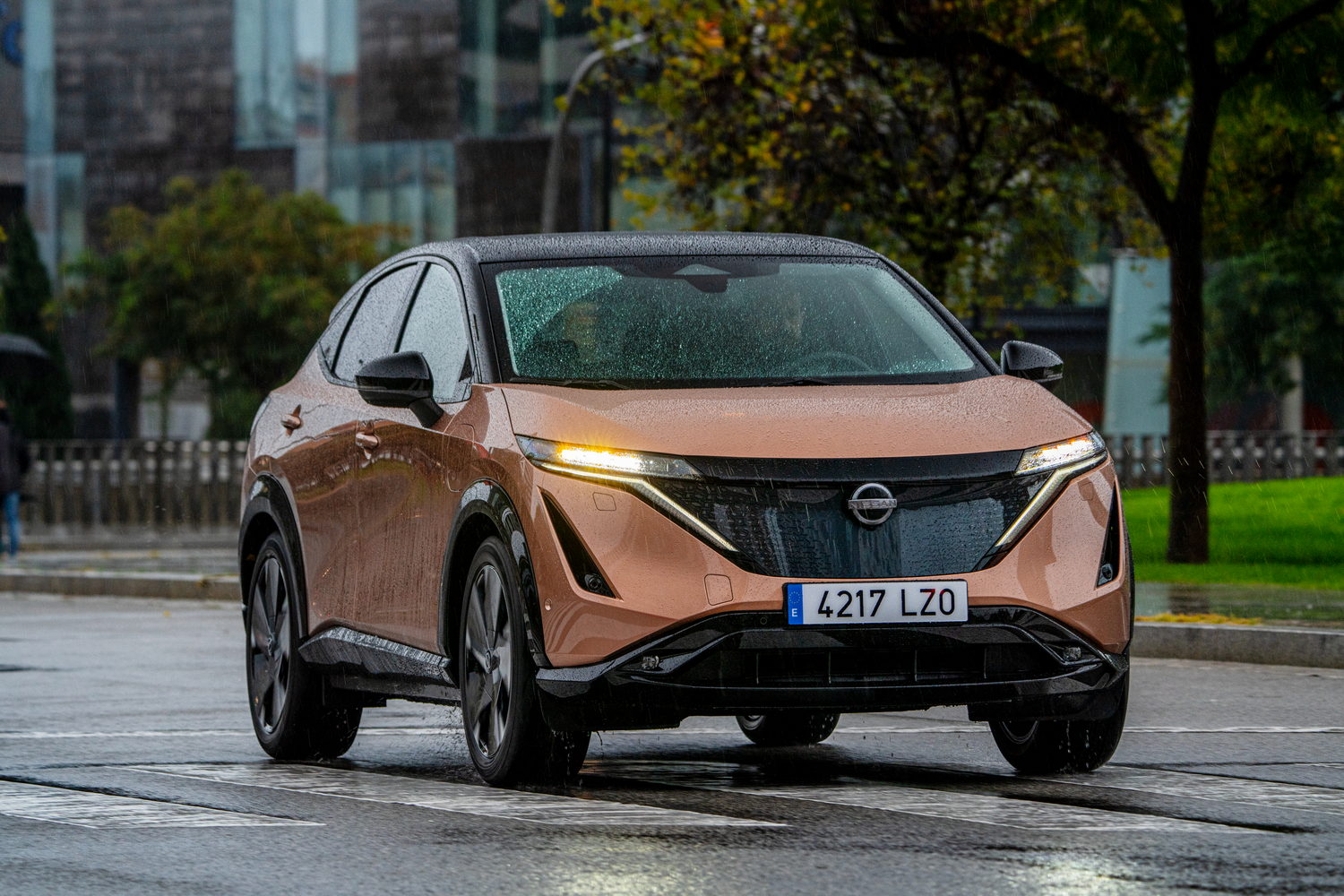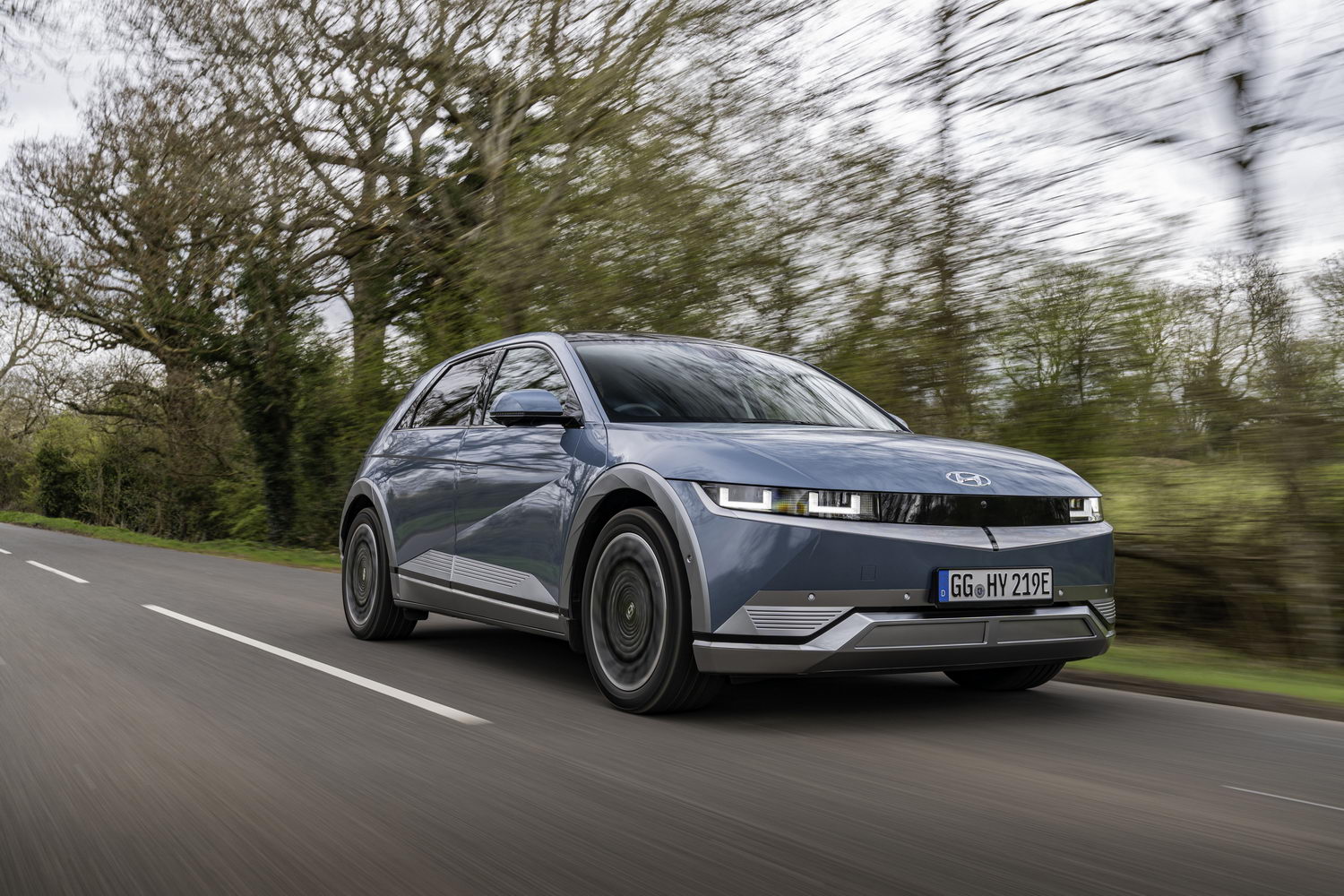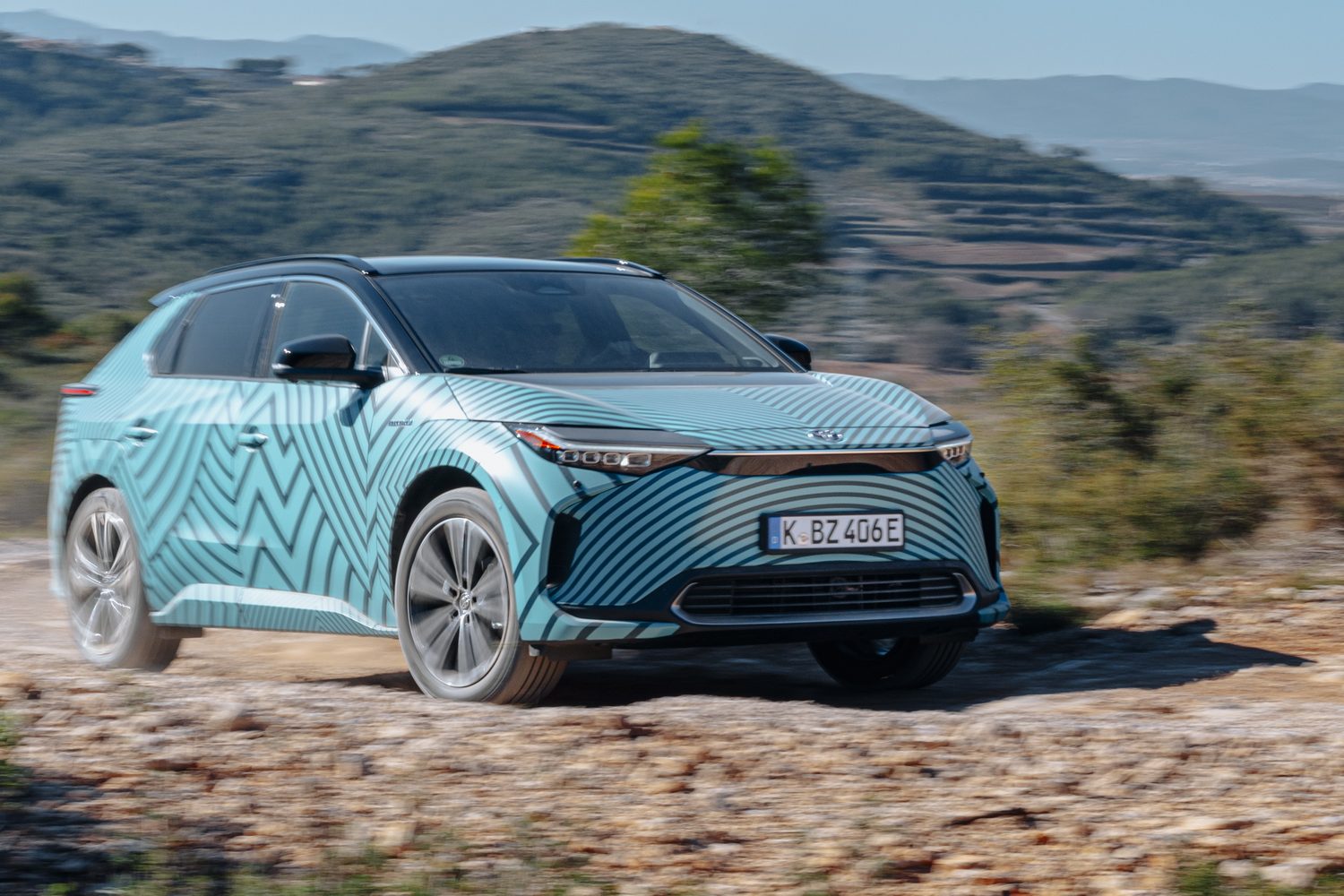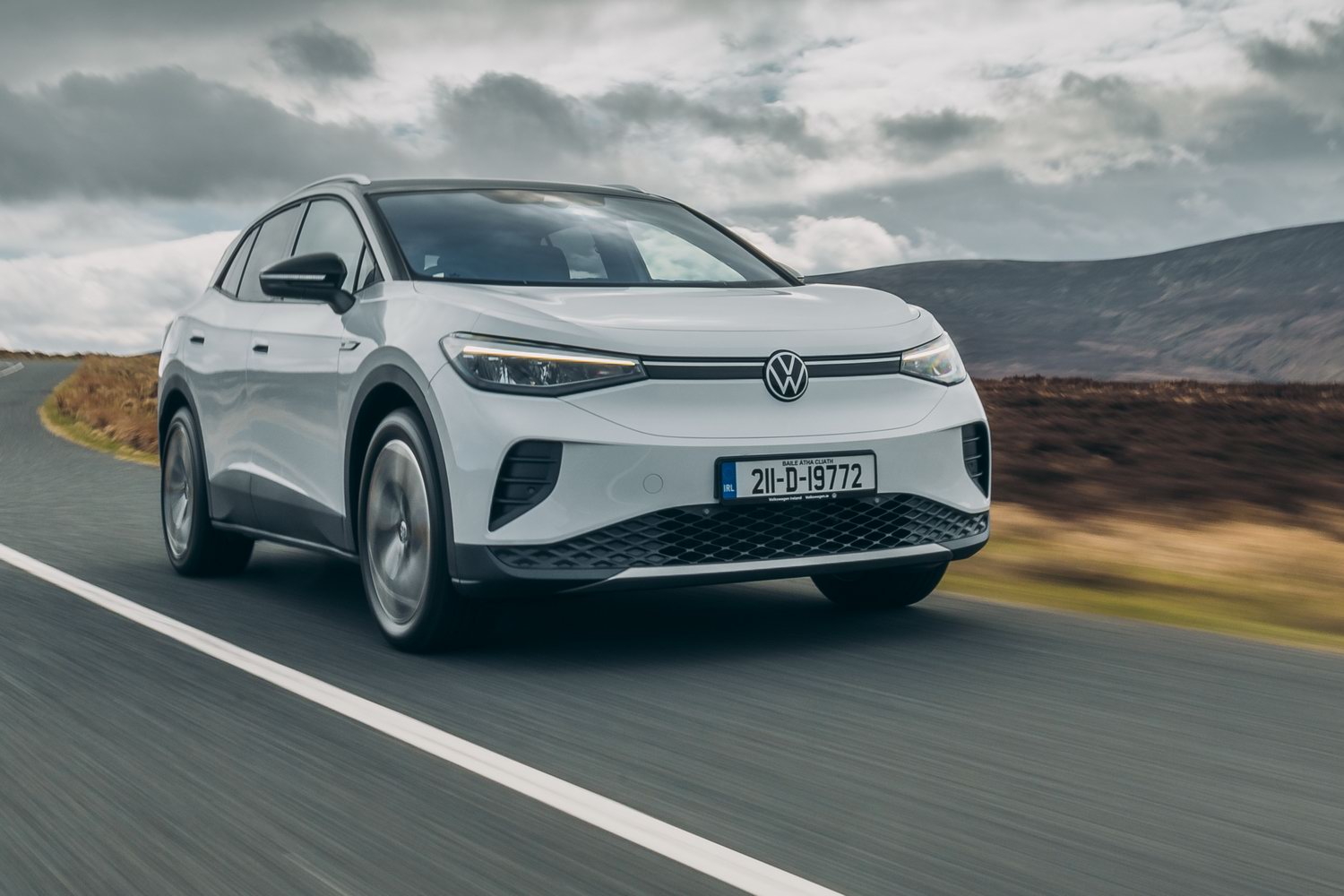Due to all the world's problems, it has taken rather longer than was intended to get the Nissan Ariya to market. It's set to arrive in Ireland in limited numbers in time for the July '222' registration plate change targeting the best and most popular electric SUVs on the market - the likes of the Skoda Enyaq, Volkswagen ID.4, Kia EV6, Hyundai Ioniq 5 and equally-new Toyota bZ4X. Ahead of the Ariya's launch, we got the opportunity to get behind the wheel of a pre-production version for a short drive, to get a taste for how it stacks up against such accomplished rivals.
In the metal
Nissan refers to the Ariya as a coupe-crossover because of its smooth and sloping roofline no doubt. It's certainly striking looking, notably so in a two-tone finish, where the darkened lights and detailing give the car a lot of presence.
At 4,595mm long, 1,850mm wide and 1,660mm high, the Ariya is 170mm longer, 12mm wider and 25mm taller than the current Nissan Qashqai. It's very close in external dimensions to the Volkswagen ID.4 and Skoda Enyaq. The Toyota bZ4X, Kia EV6 and Hyundai Ioniq 5 are all a little longer.
Whatever you think about the exterior of the Ariya, you're likely to approve of the cabin, as it's astoundingly good. The seats are noticeably comfortable and supportive, while the leather-wrapped steering wheel is good to hold and even the column stalks for the indicators and wipers are solidly engineered. The dashboard is dominated by two 12.3-inch screens aligned behind a single moulding. Cleverly, the centrally-mounted touchscreen is a little further from the windscreen to make it easy to reach.
Below that, integrated into the solid trim material that runs the width of the car, are the seamless controls for the air conditioning system. They offer up haptic feedback on pressing them, which is a big improvement on touchscreen positioning. The same concept is employed on the centre console, where the drive modes, etc. are selected. Another pair of similar buttons opens and closes a gloriously overengineered storage box within the dashboard - otherwise hidden from view. That's next to a conventional glovebox.
Back on the centre console, there's a wireless device charging pad under the armrest and another slot to hold a device down near the floor, next to USB-A, USB-C and 12-volt charging ports. It's all very well thought out.
It's also incredibly spacious feeling. The driver's and front-seat passenger's footwells are joined, enhancing this sensation, and there's an ambient lighting system inspired by paper lanterns.
Access to the back seats is via wide-opening doors and generously proportioned door apertures. Legroom is comparable to that of the Ariya's rivals and the floor is completely flat all the way across. The centre console can slide fore and aft and it has air vents for the rear passengers within it, along with USB sockets and - where fitted - buttons for the heated rear seats.
So long as that centre console is in its forward position, three adults would be comfortable in the back of the Ariya, so long as none of them are too wide or tall. In our test car, which featured a large glass roof, a six-foot-tall person would find their head touching the headlining in the rear.
There's a pair of ISOFIX child seat mountings in the two outer rear seats, as is the norm, while the centre seat base is quite wide. It may be possible to fit in a compact booster seat there.
The rear seat backs split and fold down to allow carrying of longer items. When the boot floor is in its higher position, there's a completely flat load surface. The underfloor section is big enough to hold a few charging cables, or the floor can be set at a lower level to maximise the volume of the main boot. Nissan quotes a luggage capacity of 466 litres for right-hand-drive Ariyas with front-wheel drive. Add all-wheel drive and that figure drops to 408 litres.
Driving it
Our time behind the wheel of the Ariya was limited to the confines of the Jarama racetrack in Spain. Sensibly, Nissan didn't just send us off to lap as fast as we could, as that's all but irrelevant to the average buyer of an electric SUV. Instead, it divided up the track into sections designed to mimic various real-world situations, though it should be noted at this stage that the road surface was super-smooth throughout, so we can't really comment on the Ariya's ride comfort.
In the first section, speeds were kept to well below 50km/h to simulate city driving. We had to obey stop signs and navigate around obstacles with little space to spare. This served well to illustrate the usefully tight turning circle and the direct steering, along with the overall visibility. It was also a perfect opportunity to use the 'e-Pedal' system, which allows the driver to operate the car using the accelerator pedal only. Easing off slows the car using a strong regenerative braking effect. It takes a little getting used to, but is a really relaxing way to drive once you've cracked it - and it's efficient in stop-start traffic, too.
The word relaxing is a good one for the Ariya in general. Its electric motor is inaudible, while the instantaneous torque from that motor, and its delivery, make for a particularly smooth experience for driver and passengers alike.
We got a chance to up the speed in the next section, allowing us free rein through some of the flowing corners of the circuit. There was a fine layer of dust on the road reducing grip levels, but still the Ariya impressed. Unwanted body movements - be that when cornering fast, or when accelerating or braking - are noticeably kept in check and when the front tyres do run out of grip and push on, the driver is informed via the steering. The traction control system is quick-witted enough to keep things on the straight and narrow and it feels utterly composed, stable and safe, even when pushed hard.
The drive selector in the centre console is a little strange looking, but it's intuitive enough to use, and there's an additional 'B' position to increase the level of brake energy regeneration. Despite the considerable use of that, the brake pedal feel is remarkably natural.
In this front-drive guise, the Ariya couldn't be described as an engaging car to drive, but it is more competent than most will ever discover and it has a certain intangible quality that will lead its owners to say they enjoy driving it. Most will likely leave the driving mode at the default 'Normal' setting, the Eco mode is for eking out every last kilometre of range and the Sport option gives quicker response to the accelerator and heavier steering.
The final section of the test track involved the last corner of the racetrack and the start-finish straight, allowing full acceleration and speeds in excess of our motorway limit. This revealed no chink in the Ariya's armour, affirming its high-speed stability while also making it obvious that wind roar and road noise shouldn't be a problem on the motorway.
As you can imagine, we didn't get a chance to test the range of the Ariya's battery, nor its efficiency. Nissan quotes an official range of 403 kilometres for the front-wheel-drive model using the 63kWh battery pack.
What you get for your money
Irish pricing for the Nissan Ariya starts from €48,995 including incentives. Two battery packs have been confirmed, of 63- or 87kWh usable energy capacity. In front-wheel-drive guise, the 63kWh pack allows a range of up to 402 kilometres. The 87kWh battery allows for a range of up to 529km.
The 'e-4orce' all-wheel drive option will arrive at a later date.
Power outputs vary across the line-up. The base powertrain tested here peaks at 217hp and 300Nm. Adding the bigger battery allows for a higher maximum power - to 242hp. The addition of an extra motor for all-wheel drive with the 63kWh battery means peaks of 278hp and 560Nm, increasing to 306hp and 600Nm when the 87kWh battery is used. Nissan has also confirmed that there will be a 'Performance' version of the 87kWh model, putting out up to 394hp.
Two trim levels will be available, called Advance and Evolve. A wealth of active safety systems is standard, under the umbrella of the Nissan Safety Shield, along with ProPilot with Navi-Link and e-Pedal, wireless Apple CarPlay, cabled Android Auto and a wireless phone charger.
Highlights of the range-topping Ariya Evolve include synthetic suede seats, Intelligent Rear View Mirror, head-up display, ProPilot Park, ventilated (heat and cooled) front seats, heated rear seats, power memory mirrors, power memory driver and passenger eight-way seats, a Bose 10-speaker sound system and an openable panoramic sunroof.
Summary
Our initial exposure to the Nissan Ariya reveals that it has the right ingredients to be one of the absolute best electric SUVs on the market. Its design is on-trend; it has a spacious and beautifully designed interior; it drives with real refinement; and it has an impressive electric system at its core.

